In 2025, both DJI and Insta360 launched their latest 4K mini pocket cameras, with Insta360 releasing the GO Ultra on August 21st, and DJI launching the DJI Osmo Nano on September 23rd.
As a loyal fan of Insta360 and DJI, I got both the GO Ultra and Osmo Nano as soon as they were released, and after three months of using the GO Ultra and one month of experiencing the Osmo Nano, I've gained an in-depth understanding of both products. In this review, I will compare GO Ultra and Osmo Nano, discussing all the details in depth, and bring you the most realistic results to help you make the best purchase choice.
Key points of the evaluation include.
- Specification Comparison
- Dimension
- thicknesses
- Weights
- Daytime Quality
- Night Quality
- Field of View FOV
- anti-shake
- APP Software
- Boot-up Speed
- Camera overheating problem
- Charging Speed
- Battery Life
- Accessory Packages
- Remote Controls
Although some details are not visible on the specification sheet, they will greatly affect the actual usage experience. After testing and organizing, we believe that this content can be an important reference for your purchase!
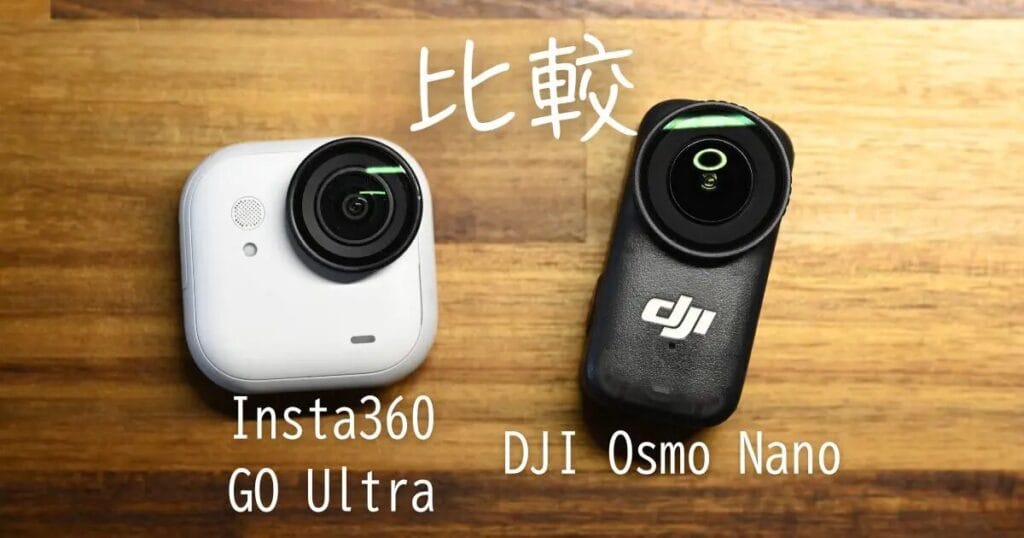
Specification Comparison
First up is a comparison of the GO Ultra and Osmo Nano, for reference, along with the GO 3S. and the GO 3S.
| Insta360 GO Ultra | DJI Osmo Nano | Insta360 GO 3S | |
|---|---|---|---|
 | 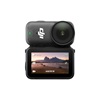 | 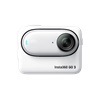 | |
| Sensor | 1/1.28 | 1/1.3 | 1/2.3 |
| maximum resolution | 4K 60fps | 4K 60fps | 4K 30fps |
| Dedicated Night Shot Mode | PureVideo | ||
| Slow Motion Time-Lapse Recording | 4K 60fps 2.7K 120fps 1080P 240fps | 4K 120fps 2.7K 120fps 1080P 240fps | 2.7K 100fps 1080P 200fps |
| Realistic Resolution | 50MP | 35MP | 9MP |
| Movie Storage | SD Memory Card | SD memory card + built-in storage | Built-in Storage |
| Maximum angle of view FOV | 156° | 143° | 150° |
| Runs.Time (single unit without Action Pod) | 1080P: 200 points (70 points) 4K: 170 points (60 points) | 1080P: 200 points (90 points) 4K: 120 points (50 points) | 1080P: 140 points (38 points) |
| 80% Quick Charge | Camera Single Body: 12 minutes | Camera Single Body: 15 minutes | Camera Single Body: 23 minutes |
| 100% Fully charged | 40 minutes. | 50 minutes. | |
| Screen Size | 2.5″ Flip Screen | 2.0″ Screen | 2.2″ Flip Screen |
| Weights | Single Body: 53.2g Overall: 162.6g | Single Body: 52.6g Camera overall: 124.0g | Single Body: 39g Camera overall: 135g |
| Waterproofing | Single body: 10m Camera Overall: IPX4 | Single body: 10m Camera Overall: IPX4 | Single body: 10m Camera Overall: IPX4 |
| Recording Environment | -20°C ~ 40°C | -20°C to 45°C | -20°C ~ 40°C |
| Price | HKD $2,999 NTD $13,980 | HKD $2,219 NTD $8,890 | HKD $2,759 NTD $12,900 |
In addition to the specifications posted on the manufacturer's website, there are a few other things to keep in mind when purchasing a camera. These points are based on my experience with mini sports cameras for over two years. I started with the Insta360 GO 3 released in 2023.
| Insta360 GO Ultra | DJI Osmo Nano | |
 | 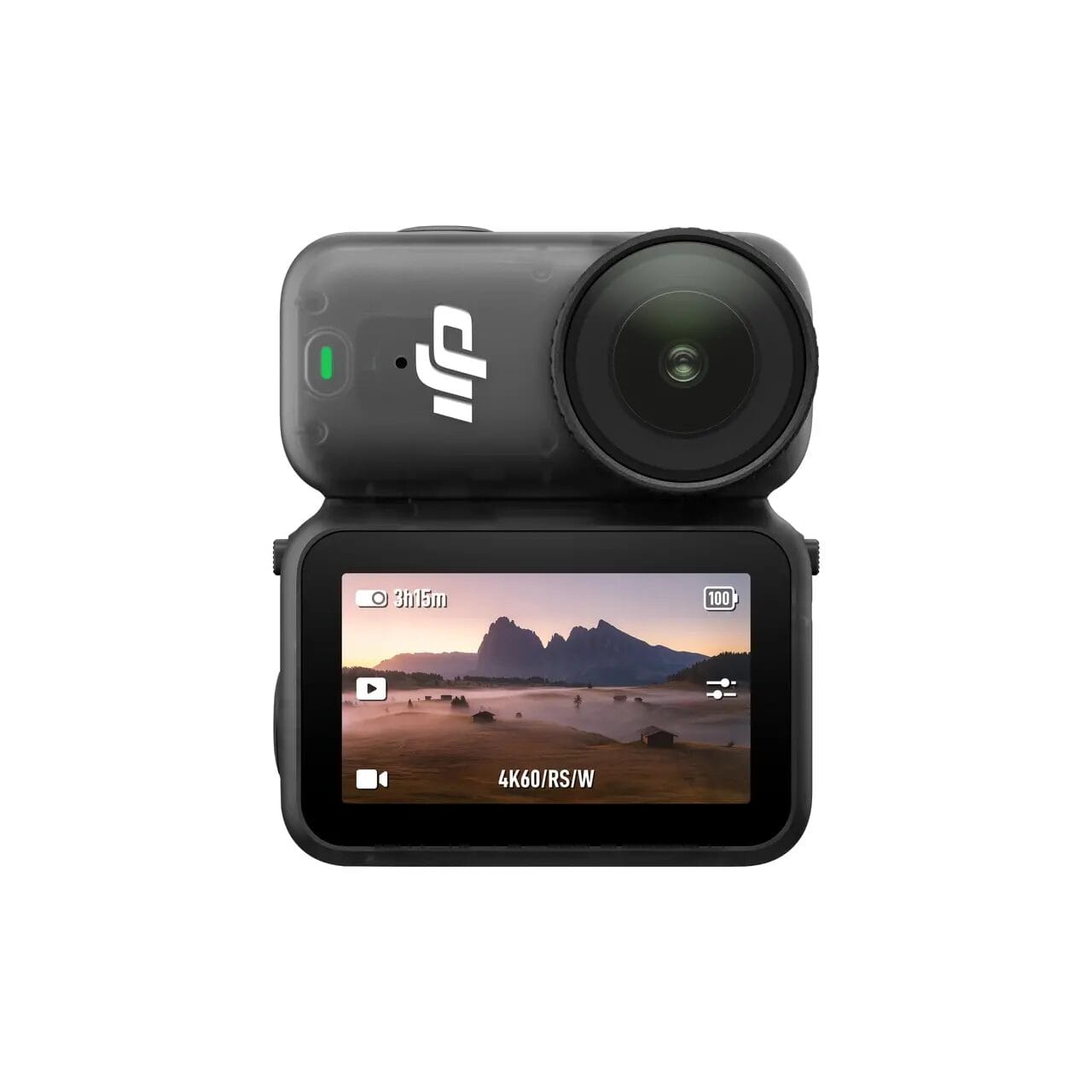 | |
| Daytime sunlight painting | ||
| Night Shot Quality | ||
| Maximum Field of View FOV | 156° | 143° |
| 120 fps slow | 2.7K | 4K |
| Photo Resolution | ||
| Built-in Storage | ||
| Running Time | ||
| Charging Time | 40 minutes. | 50 minutes. |
| Fever | ||
| Windproof Microphone | ||
| Remote Confirmation Screen | ||
| Slow motion recording | ||
| Price | NTD $13,980 HKD $2,999 | NTD $8,890 HKD $2,219 |
Insta360 GO Ultra vs DJI Osmo Nano | Highlights Summary
This review will probably be quite long, so I'll start by briefly summarizing a few conclusions.
Which one is better?
Personally, I prefer the video quality of GO Ultra. It doesn't exaggerate color temperature or saturation, but rather restores the image in a natural and realistic way, which is very comfortable to watch. In addition, there are three other things I like about the GO Ultra:
- Wide field of view of 156°, wider than Osmo Nano.
- Intuitive touch operation for a smoother shooting experience.
- Remote control for more flexible and convenient handheld or stationary shooting.
Price
For price comparison, the standard set of GO Ultra is NTD $13,980 (HKD $2,999), while the Osmo Nano is NTD $8,890 (HKD $2,219), which is a price difference of about 1.5 times.
Despite DJI's high brand recognition, the Insta360 is usually priced slightly higher in its category (thumb, panoramic, sports), and still sells well because it's a clear differentiator from DJI and has a more complete feature set.
"Price is certainly an important factor, but if price is your main concern and you want a compact thumb camera, I'd instead suggest the GO 3S, which is lighter and more cost-effective.
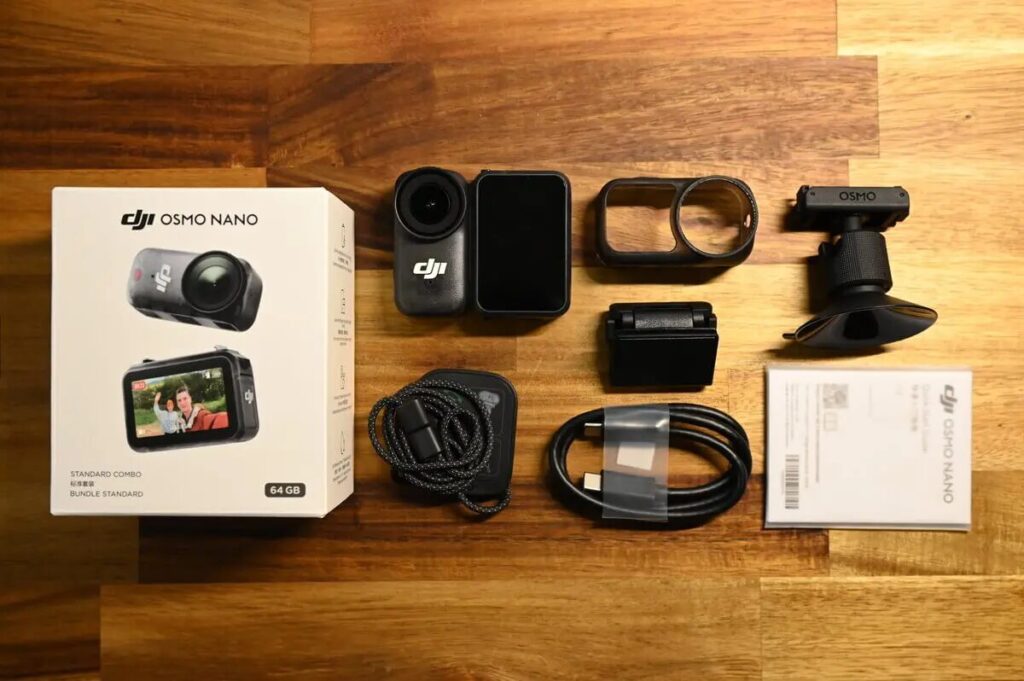
Dimension
At first glance, the Osmo Nano looks very small, but upon testing, the weight difference between the Osmo Nano and the GO Ultra is only 0.6g. Possible reasons for the close weight difference include:
- Magnet Area: The two cameras have different mounting methods and the magnet design affects the overall weight distribution.
- The GO Ultra's thin design: makes it feel lightweight despite its centralized weight.
Due to the difference in structure, the square-shaped GO Ultra is relatively more stable during recording and less shaky during handheld recording.
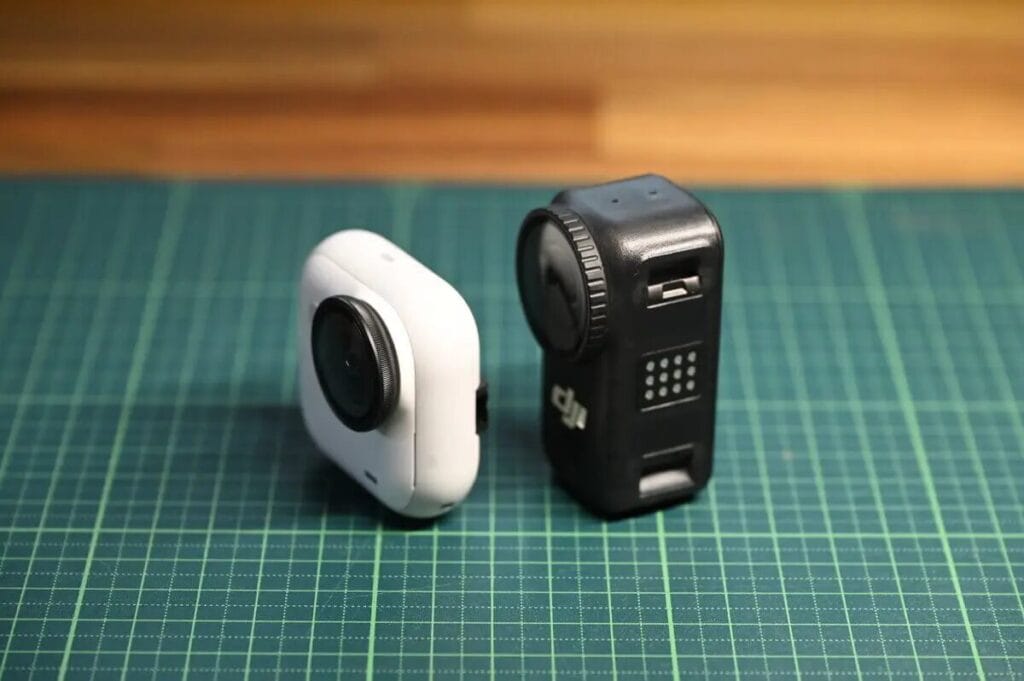
Hardware Differences
- GO Ultra enables longer 4K video recording.
- Osmo Nano takes longer to record at 1080P.
- GO Ultra Supports Quick Charge
- Recording Heat Resistance: GO Ultra supports up to 40°COsmo Nano Maximum Support 45°C
- Waterproof rating: Both are up to IPX4The single camera can withstand waterproofing 10 meters
Both cameras have their own strengths: the GO Ultra is more "practical" while the Osmo Nano is more "durable". Although there are some differences in battery and waterproof hardware performance, the hardware specifications are more or less the same.
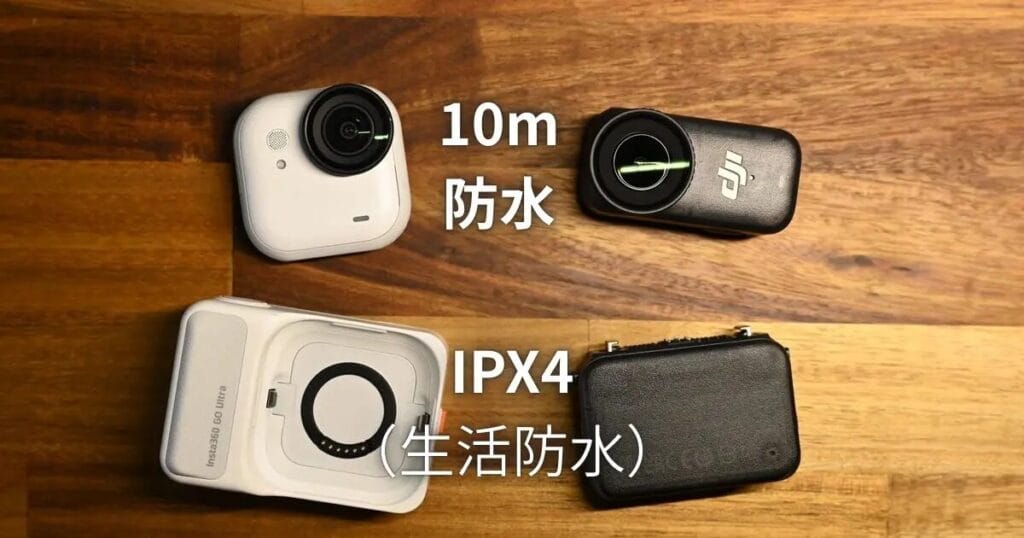
GO Ultra is more practical
Overall, I think GO Ultra is a more beginner-friendly Vlog camera that can satisfy the needs of everyday and casual users.
- 4K recording quality is good enough
- Support for various bracket accessories
- More suitable for "travel logging" and "daily vlogging" than "exercise".
- Friendly people, inconspicuous to carry
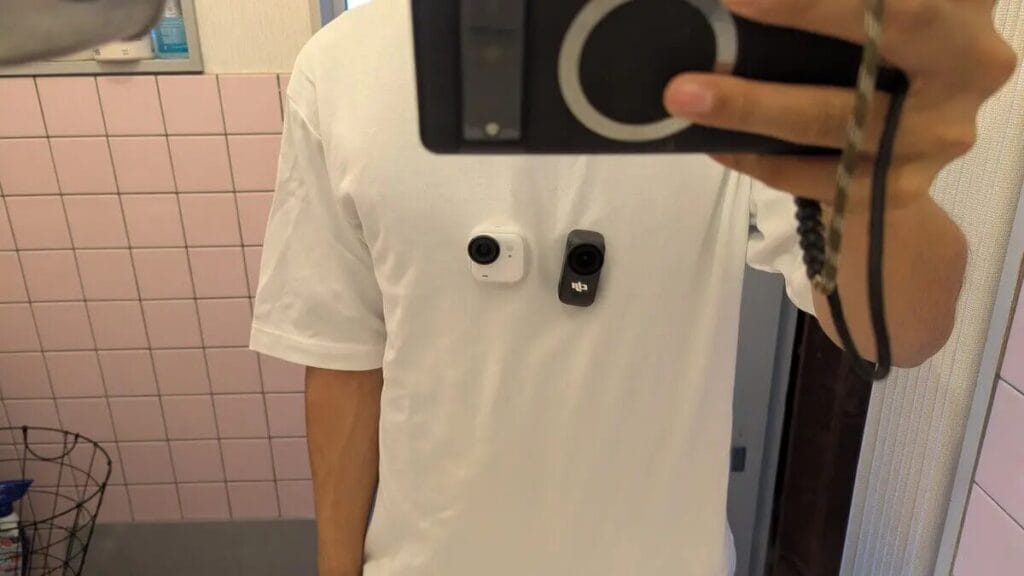
I think Insta360's product design always emphasizes on "user experience", and that's why I insisted on doing the review - only after I've used it myself will I have the urge to share it.
With its high quality, versatility and easy-to-use design, the GO Ultra appeals to all genders and travel enthusiasts. Although the price is slightly higher than the Osmo Nano, for many the value is worth it.
In addition, Insta360 has always been better than DJI in terms of apps, compared to Osmo Nano's often-unstable app connection (laughs), even when switching to Osmo 360 or Osmo Action 5 Pro, there are not so many connectivity issues.
Another problem I encountered with the Osmo Nano is that the camera heats up too easily during recording, starting to heat up after 15 minutes and even shutting down after 20 minutes of overheating.Anyone who has ever used a sports camera knows that overheating is a common problem with sports cameras, but on Insta360 or DJI products, other sports cameras almost never overheat after 10~20 minutes of video recording. It seems to be the first time I've seen such a significant heating problem on DJI's products. In contrast, the GO Ultra doesn't have a serious heating problem and usually doesn't have heating problem within 20 minutes.
DJI is more interested in the "sports scene"?
Some of the features of the Osmo Nano make me think that it's a great mini camera for recording "sports scenes".
- Inexpensive for entry-level gamers
- Specialized camera cases are available
- Supports 4K120fps recording with 4x slow motion time lapse
- The official video has always been "sporty".
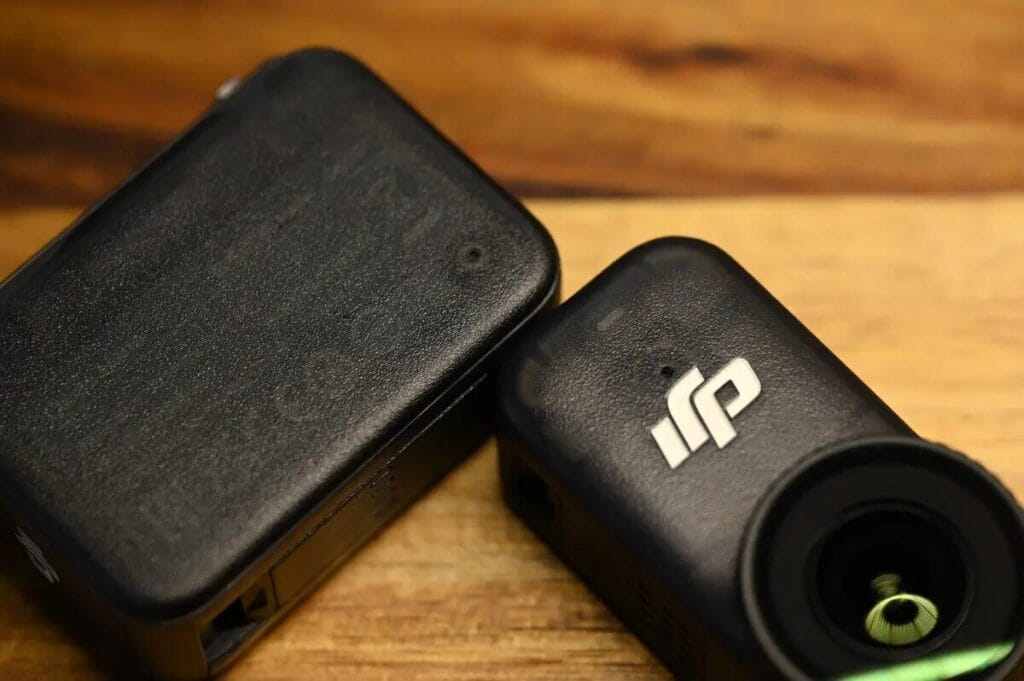
The products launched by DJI in the past two years all have a strong "sports attribute", and you can feel the strong "sense of technology" from the product design.
Take the Osmo Action 5 Pro's promotional video for example, it uses a lot of extreme sports scenes to demonstrate the product's performance, focusing on the professional sports player market. The Osmo Nano is also in the same style ⬇️.
Insta360 focuses more on "ease of use" and "newbie-friendliness," with lower thresholds at the core of the product design and user experience. Compared to DJI's hardcore style, Insta360 wants to make it easy for ordinary users to shoot great looking videos ⬇️.
Picture Quality Comparison
4K vs 2.7K vs 1080p
"4K" represents the picture quality of the movie. The higher the picture quality, the higher the battery consumption. And "fps" is the smoothness of the movie. It's similar to how many comics you can see per second. The more images you display, the smoother the action. Therefore, 120 fps is the most suitable for recording slow-motion videos.
4K 30fps is recommended for first time users.
| Shooting Scene | fps Frame rate | Key Points | Recommended |
| Daily Vlog | 4K 30fps | Better Lighted Scene | GO Ultra |
| Sports Scene | 4K 60fps | Record smooth and natural slow motion. | GO Ultra |
| Slow Motion Delay | 4K 120fps, 2.7K 120fps, 1080p 240fps | Capture the smallest movements | Osmo Nano |
| Night Shooting Performance | 4K 30fps (PureVideo) | Clear and bright at night | GO Ultra |
Daylight Quality ( Still Photo )
The GO Ultra usually delivers better video quality in daylight. However, starting with the DJI Osmo Action 5 Pro, DJI has made significant improvements in video quality. With the Osmo Nano, the difference in image quality between the GO Ultra and the Osmo Nano in daylight has been significantly reduced.
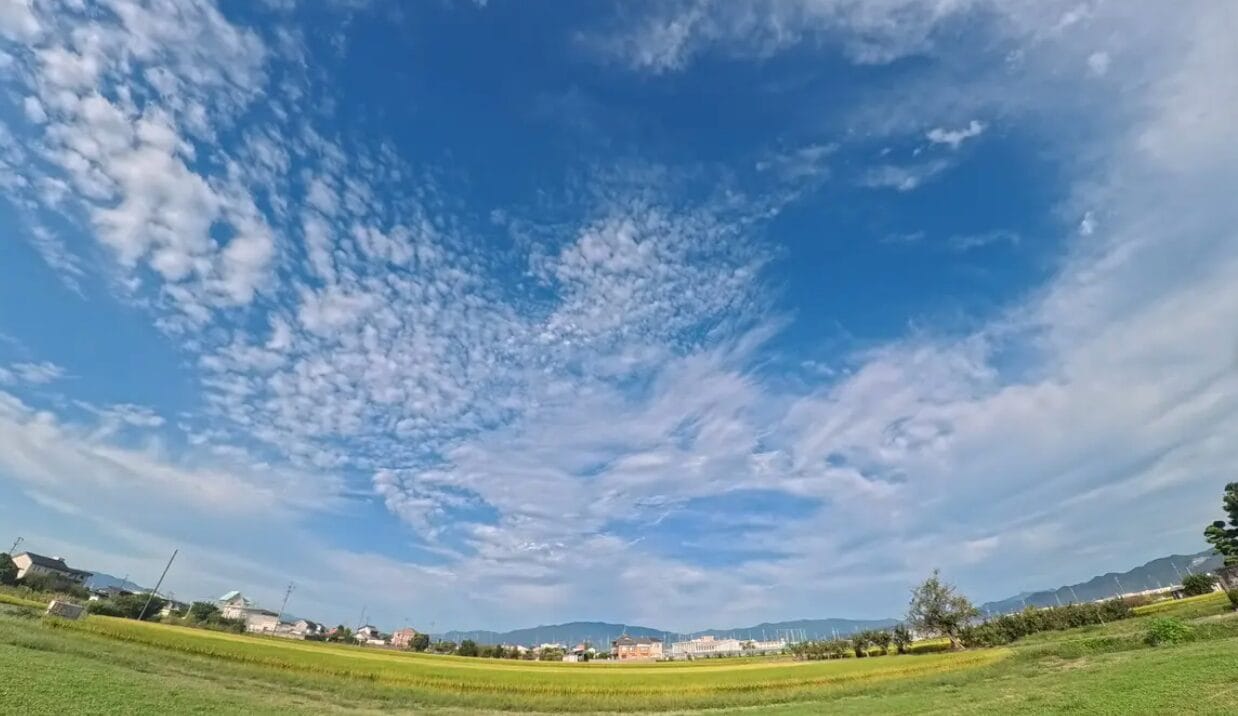
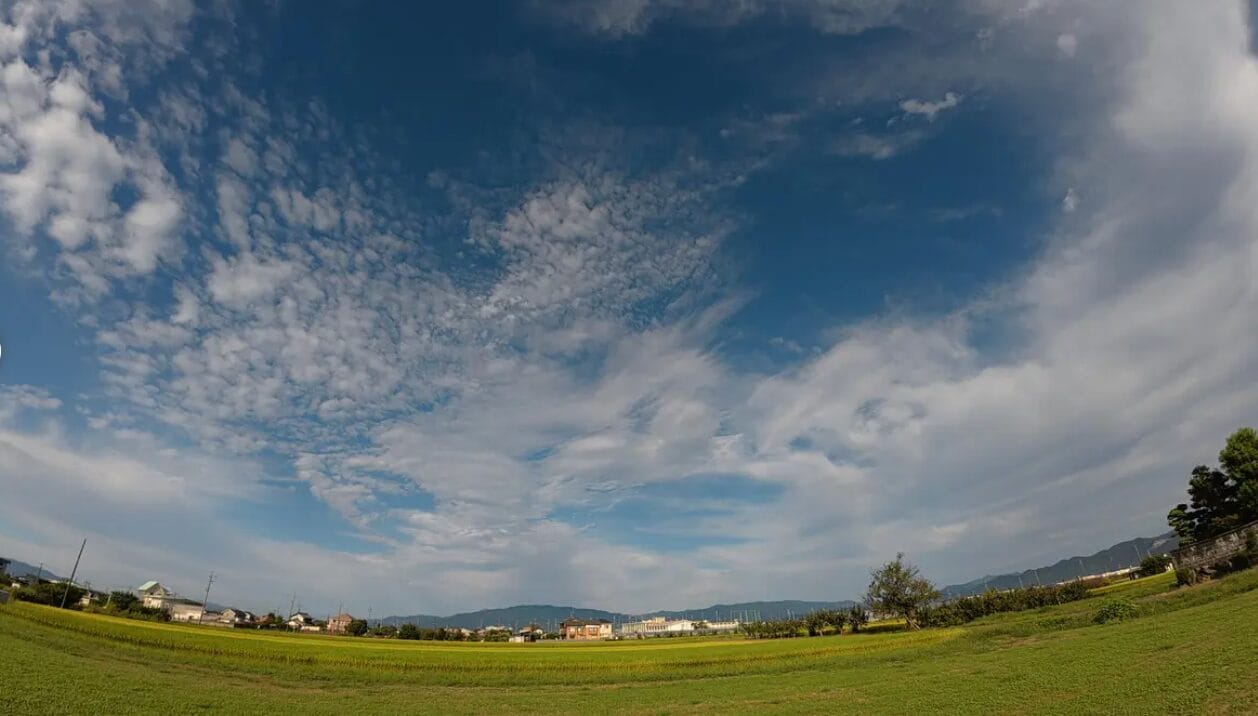
The difference is even more pronounced in still photos. The Osmo Nano's photos look slightly darker, but rather than being underexposed, the HDR effect is too strong, resulting in a suppressed overall brightness.
Looking at more samples, you can see that the Osmo Nano is not always dark, and in backlit scenes, the Osmo Nano has more saturated colors and clearer outlines. This is consistent with the style of the Osmo Action 5 Pro and Osmo Action 360 - DJI has a clear preference for enhanced HDR performance that prioritizes pleasing colors over light levels and detail resolution.
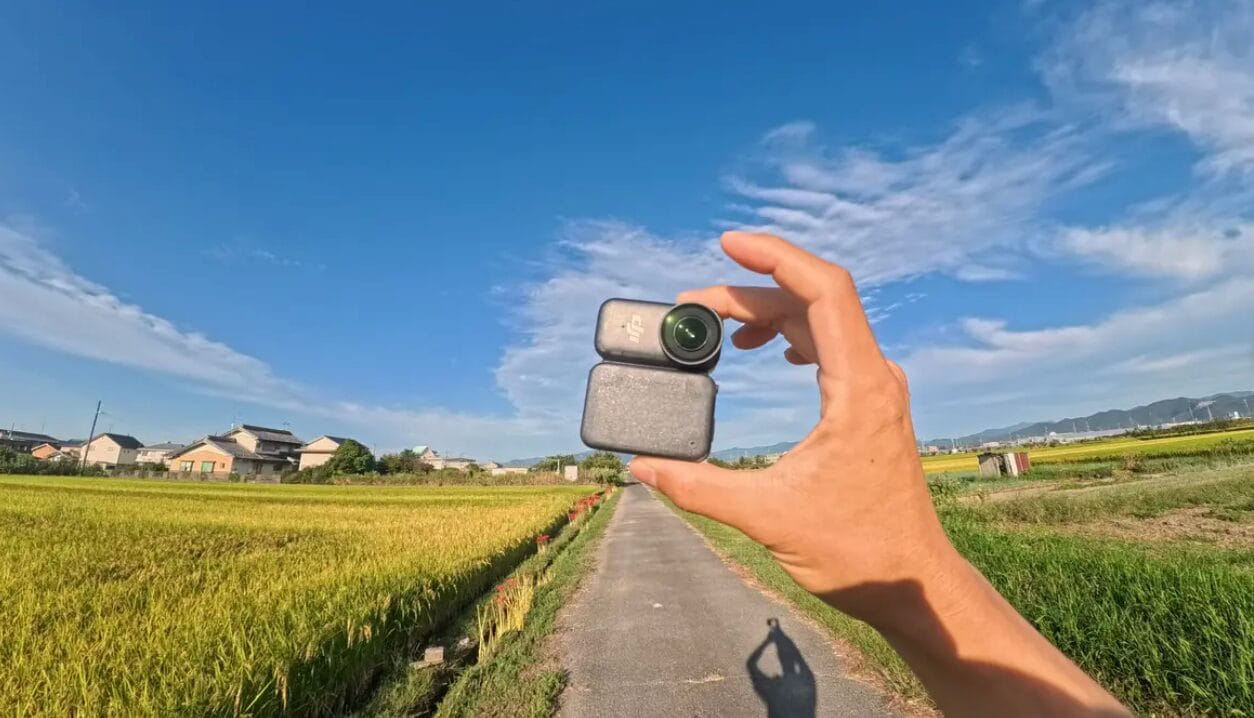
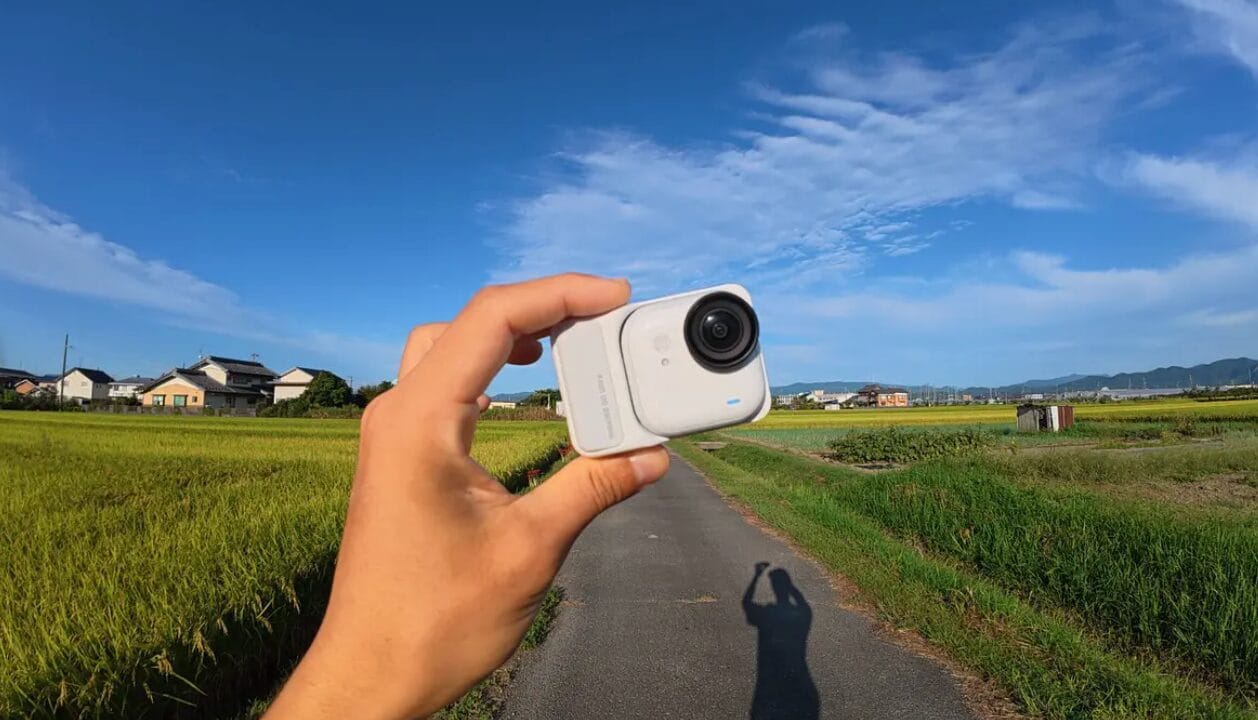
Take this contrast between the asphalt and the sky for example: at first glance, the Osmo Nano's colors are bright and visually pleasing; at first glance, the Osmo Nano's colors are bright and visually pleasing.
However, closer inspection reveals that shadow detail is weaker and the sky is not as layered as on the GO Ultra, which presents a more three-dimensional image, a style that may be preferred by those with a higher level of image quality.
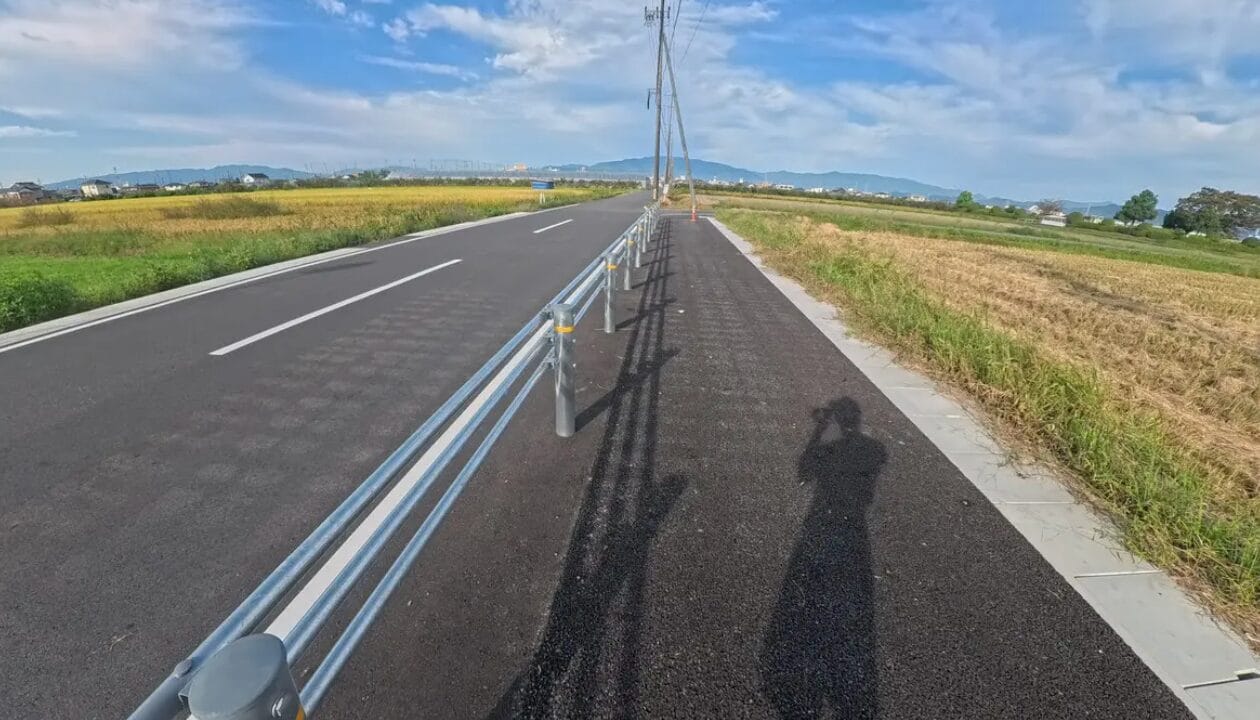
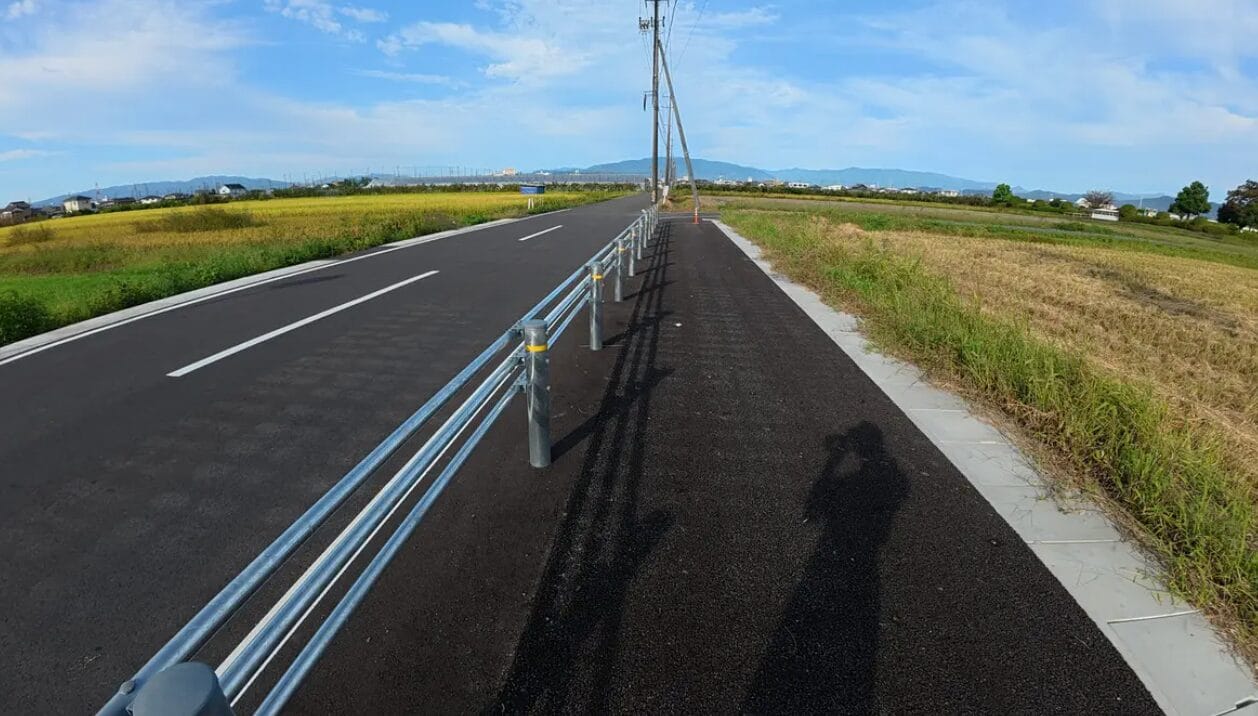
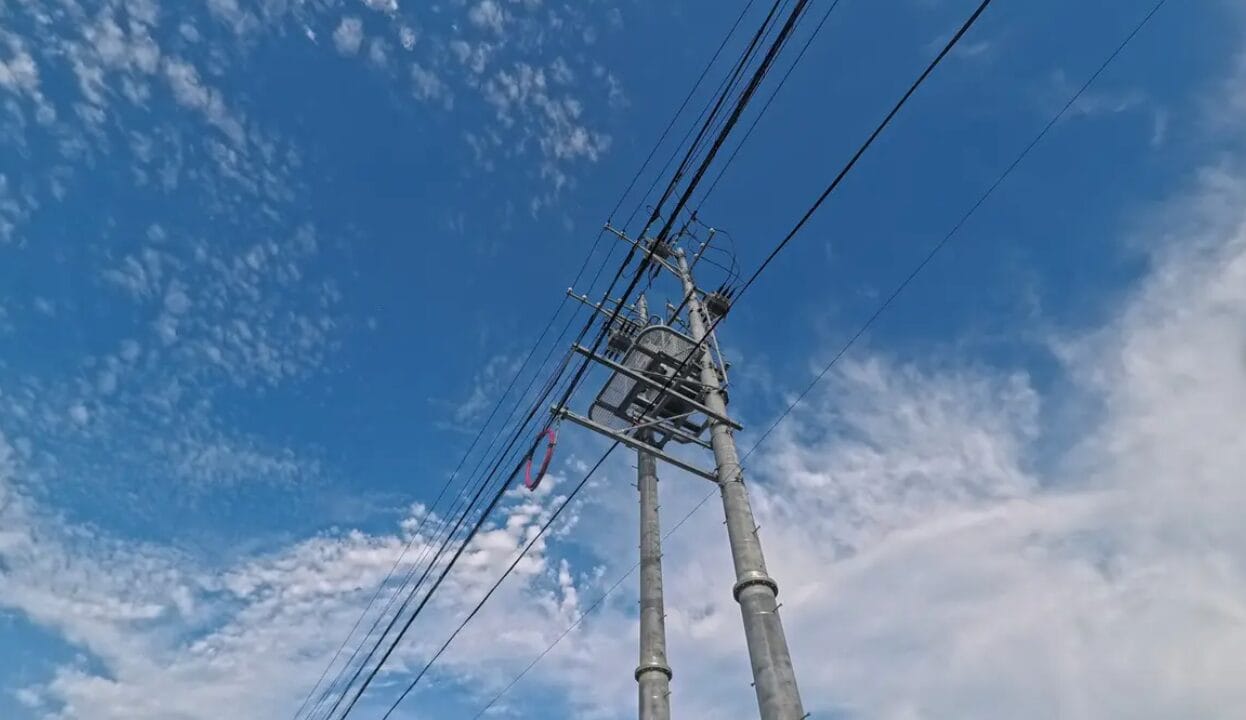
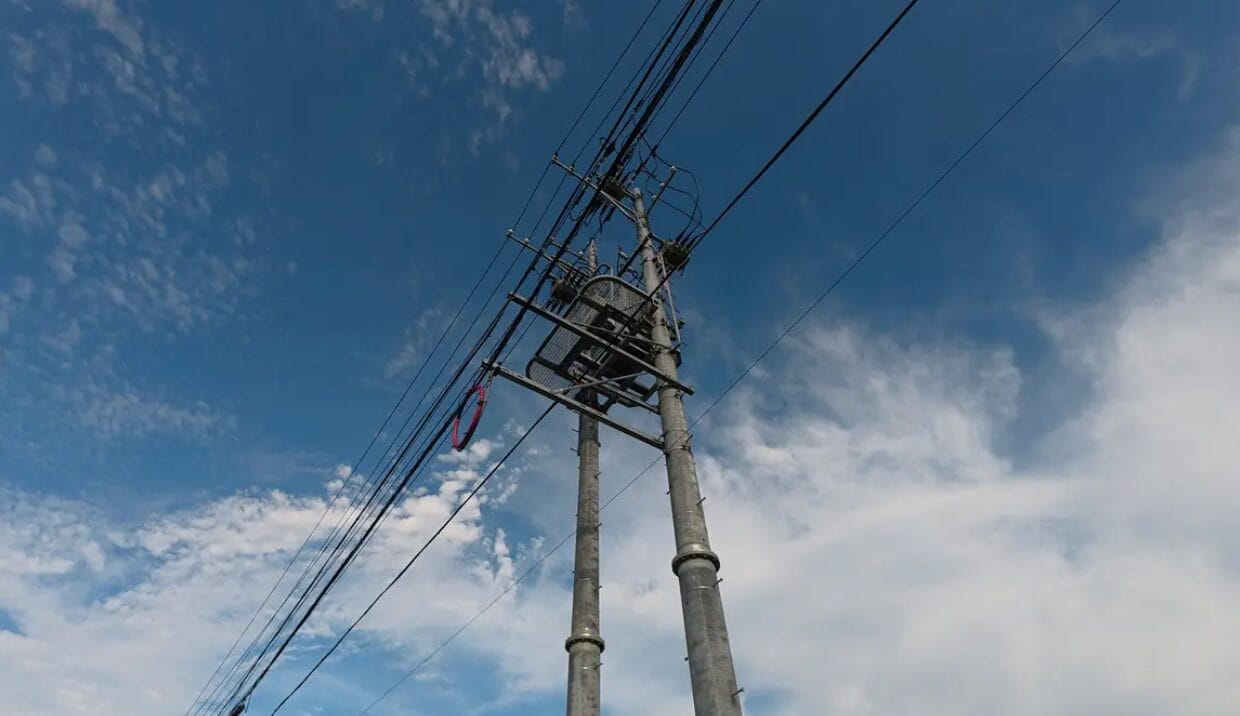
However, it's worth noting that the resolution of the Osmo Nano is significantly better than that of the Osmo Action 5 Pro, and with DJI's continued improvement in image quality, maybe in 1-2 years, the phrase "DJI's image quality is not as good as the Insta360" will be a thing of the past. But for now, I personally prefer the Insta360's image quality.
Starting from Ace Pro 2, we can see that Insta360 has put a lot of effort into the research and development of picture quality. Better picture quality, more complete software ecosystem and accessory system also make the product pricing unable to pursue the extreme price/performance ratio like DJI.
The two companies have chosen different marketing strategies: DJI focuses on high price/performance ratio, while Insta360 focuses on improving the overall user experience.
Daylight image quality (from the movie)
4K Video Test
Next, I edited a 4K video for comparison.
The overall performance is in line with the trend for stills - the HDR effect of the Osmo Nano is more pronounced. However, in some scenes, this feature turns out to be an advantage.
The Osmo Nano delivers excellent performance, especially in backlit environments.The powerful HDR function effectively balances dark and light in high-contrast scenes, avoiding overexposure in highlights and preserving details in dark areas without dead blacks. In contrast, the GO Ultra is more prone to loss of detail in such high-contrast scenes.
The composition isn't perfect, but it clearly shows how the Osmo Nano performs under backlighting. Figures and foreground details are well preserved, but at the cost of compressing the sky color to a light blue - a typical feature of strong HDR processing.
This is a selfie taken in direct sunlight ⬇️.

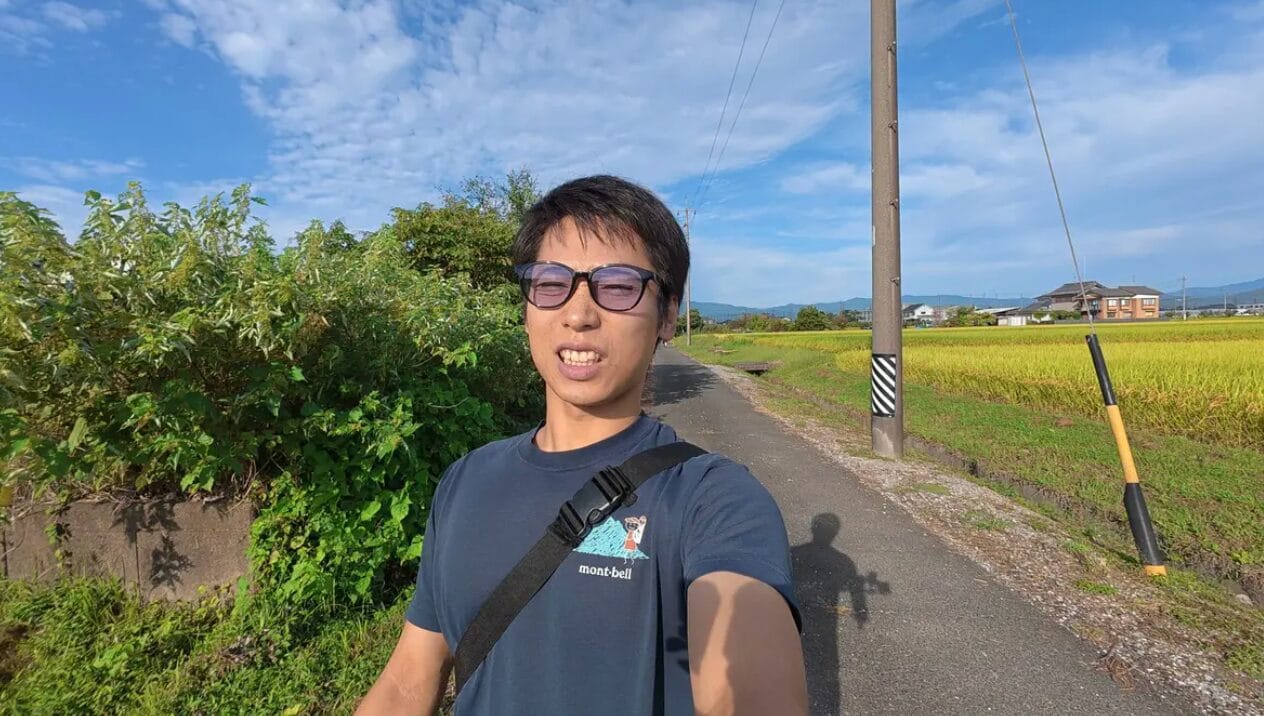
I took this photo of the red flowers in full bloom, and I found that the Osmo Nano's color saturation is obviously too high. Not only the red color of the flowers is too strong, but also the color of the rice field in the background is too bright.The overall picture is a bit oversaturated.Zoom in for a closer look - the Osmo Nano's shot of the flowers on the other side of the river is too saturated and loses its color depth, making it look distorted.
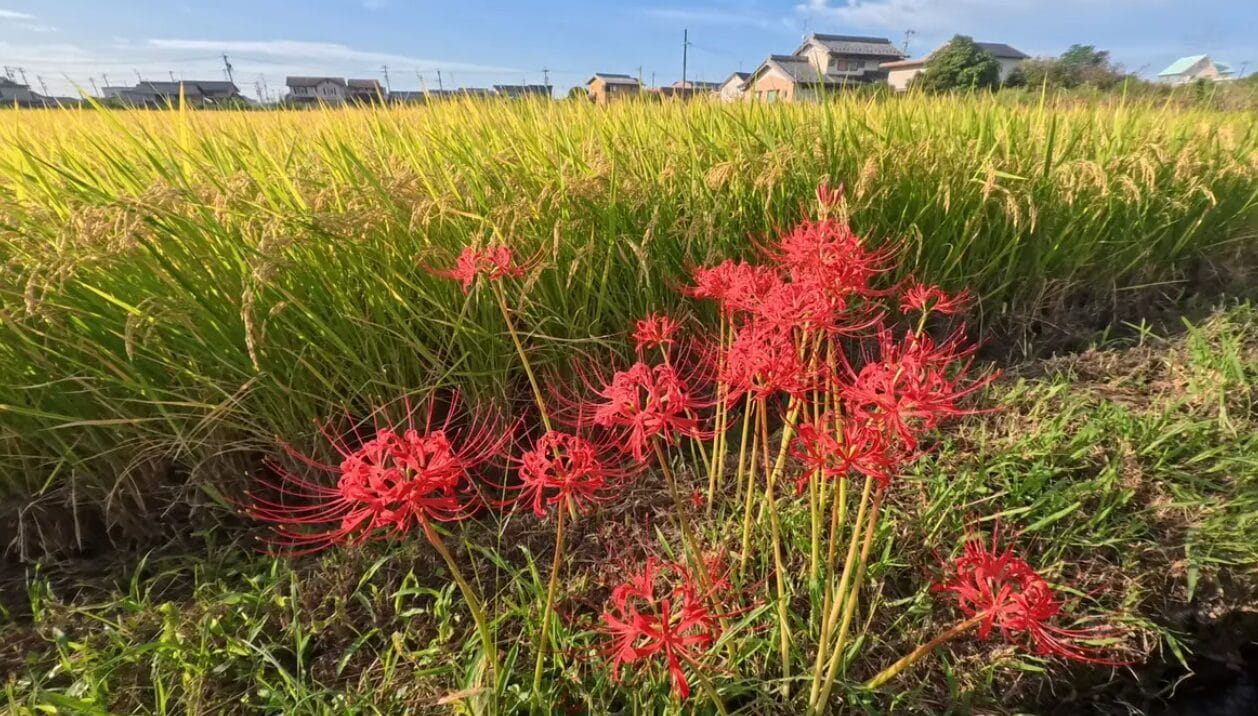
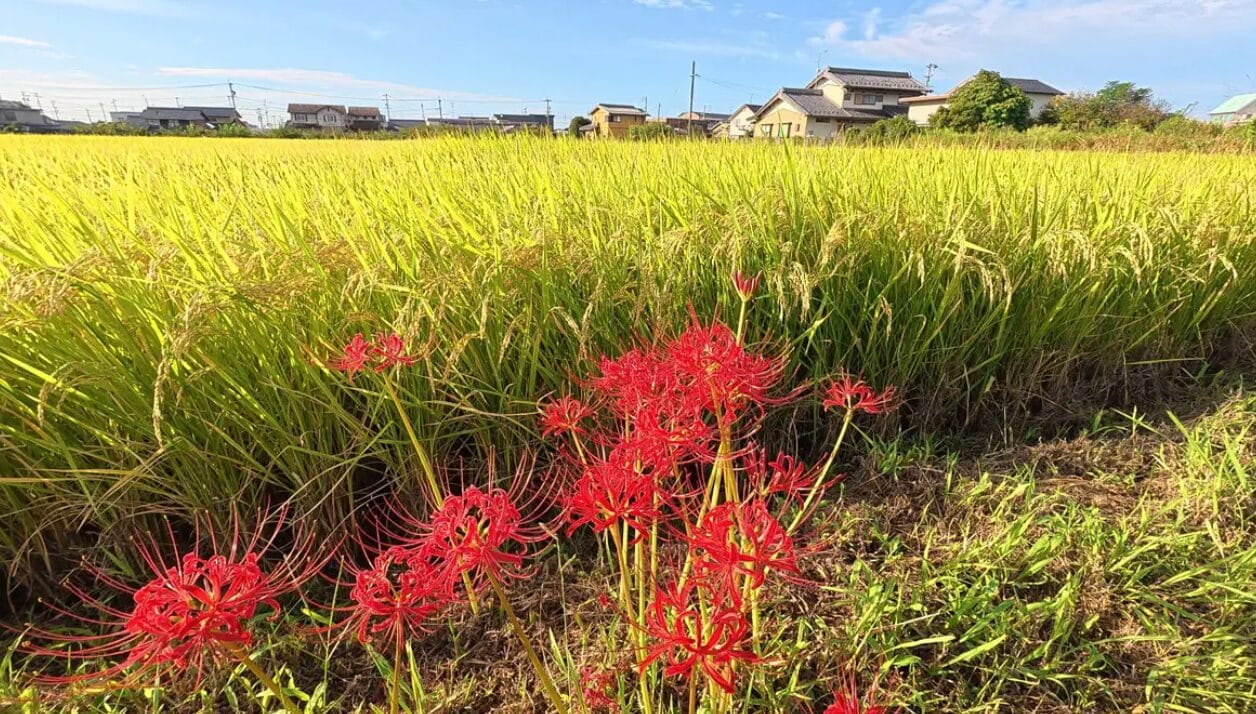

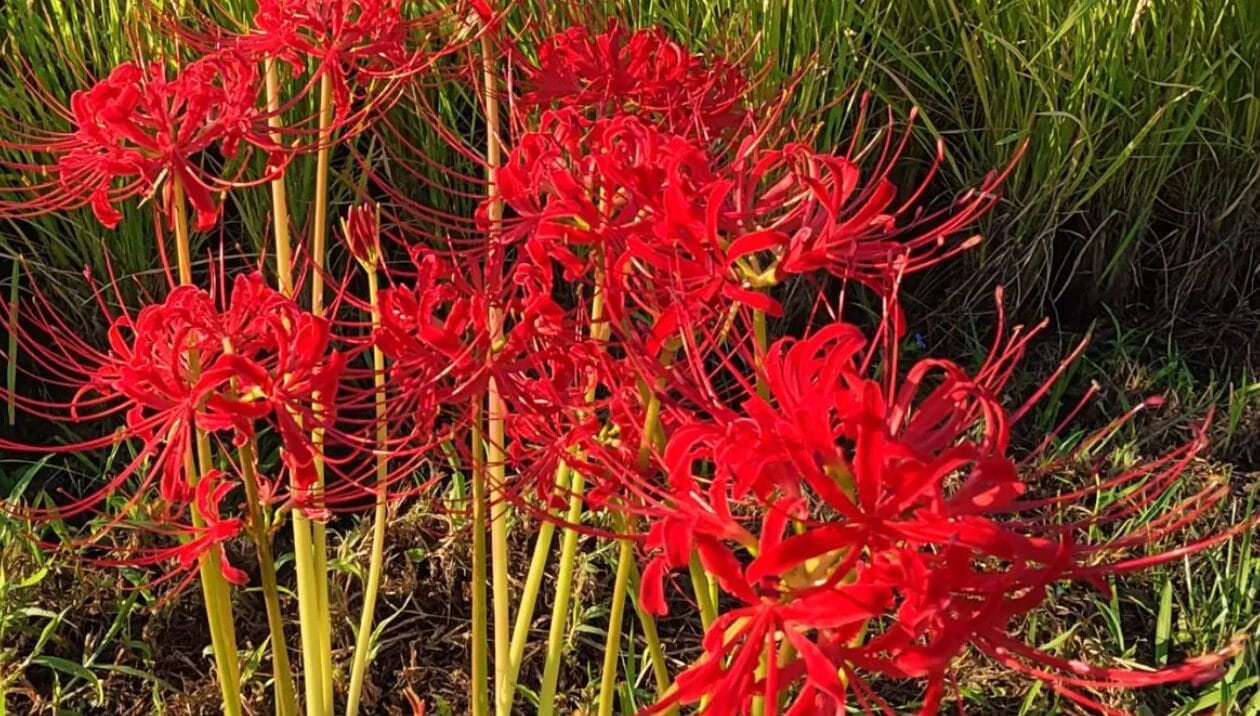
Incidentally, DJI's 10-bit Log mode is not very useful if you only use DJI Mimo for editing. 10-bit + D-Log mode is more suitable for those who subscribe to Adobe Premiere or other professional software (I don't have a subscription, so I can't test it in depth).
Some people may think I'm too critical of "picture quality", but as a digital SLR camera fan, I do have a certain obsession with picture quality. From an objective point of view, Osmo Nano's vivid and clear colors are more suitable for sharing on social media, even without any post-coloring.
Conclusion
Osmo Nano and GO 3S are "corrective" styles with enhanced colors
GO Ultra and GoPro are "natural" styles that are closer to the real thing.
Night Shooting Performance
I've made a comparative video about night photography.
There's always been a clear difference between the Insta360 and DJI in low-light situations: the Insta360 specializes in dark detail, while DJI's lighting is often overpowering. But the Osmo Nano is a revelation - its image quality in low-light conditions is also surprisingly good.
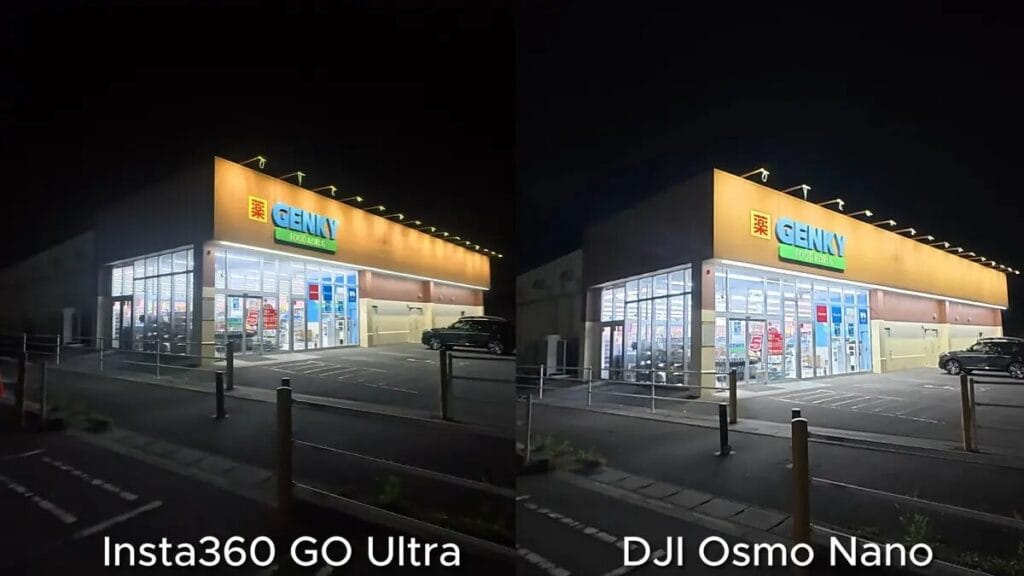
Compared to DJI's past sports cameras, the Osmo Nano's image quality has really improved. Honestly, DJI hasn't been good at handling high contrast scenes like "strong light in dark environments", but the Osmo Nano has been able to balance out the contrast between dark and light very well. In some scenes, it even outperforms the GO Ultra.
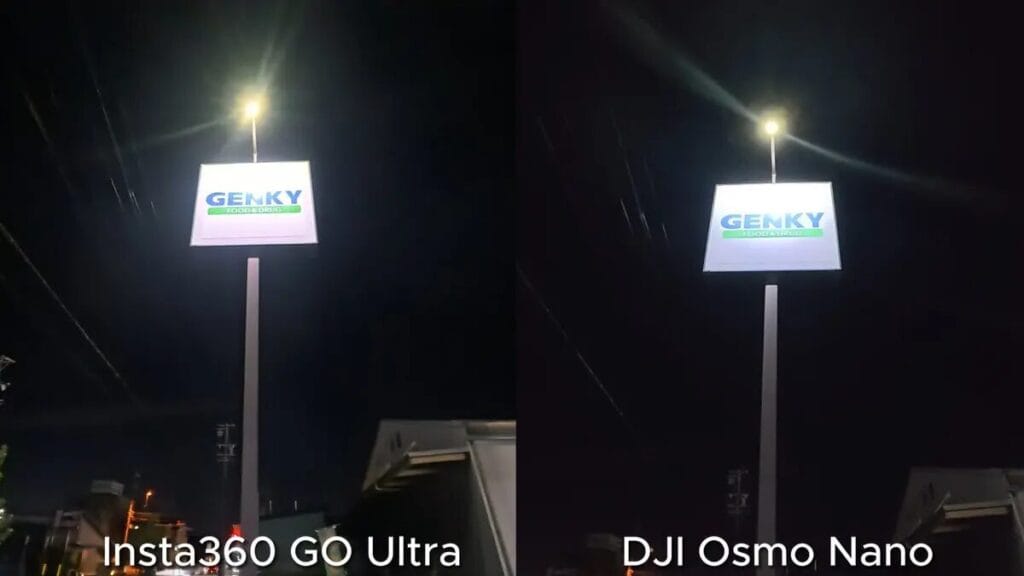
Is the GO Ultra better in terms of color reproduction and detailing (including stereoscopic images)? Objectively, yes, but compared to past DJI products, the Osmo Nano has narrowed the gap to almost negligible.
It's worth noting that even when walking or running in extremely dark environments, the Osmo Nano does not suffer from flickering, a common problem in the past, and has excellent stability.
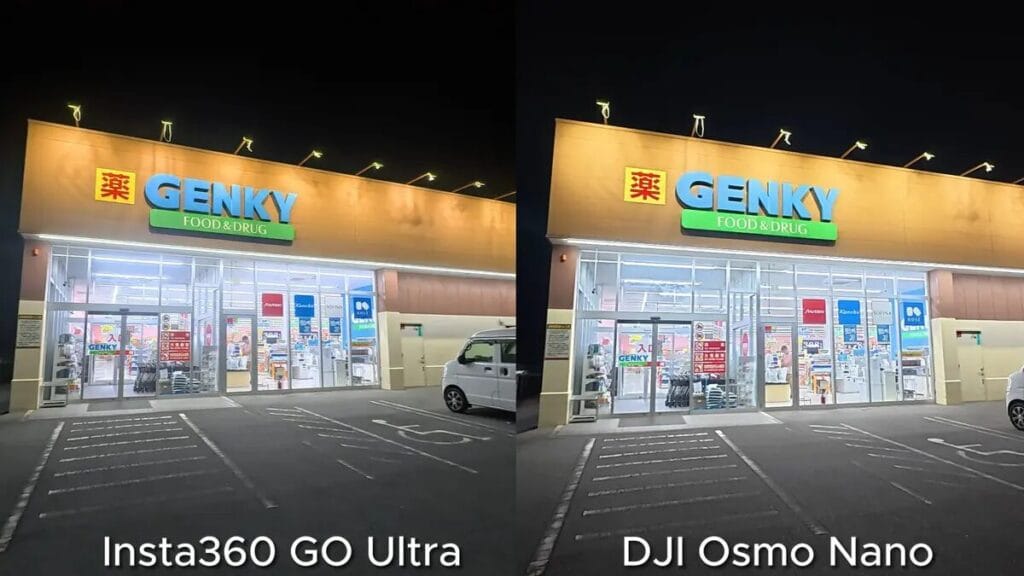
Although the Osmo Nano is still a bit lacking in color reproduction, it outperforms the GO Ultra in some scenes when it comes to dark and light handling, and all things considered, the Osmo Nano's optimization for low-light conditions is a breakthrough.
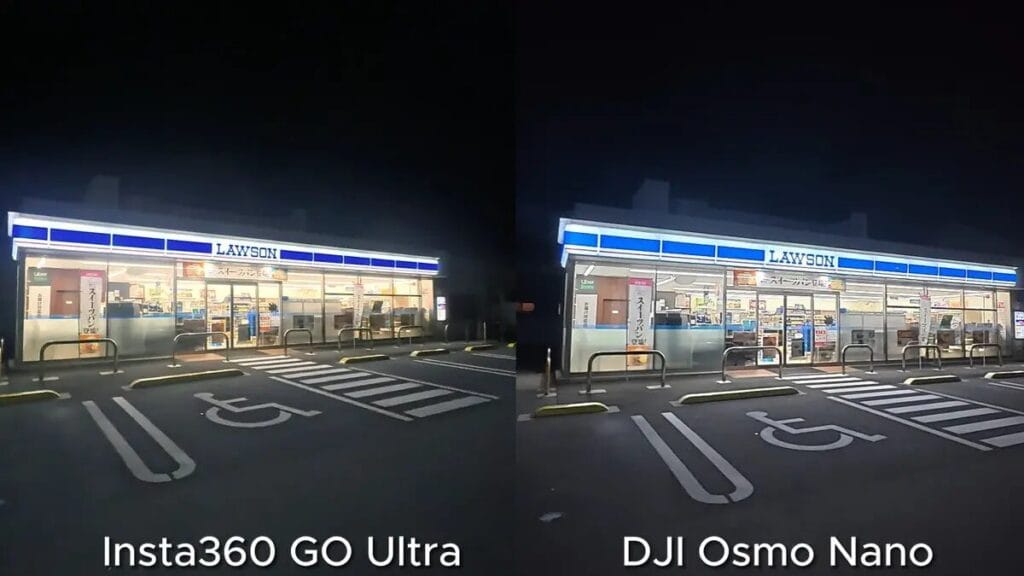
FOV Field Angle
The GO Ultra has a maximum wide angle of 156°, the same as the GoPro HERO 13, while the Osmo Nano is slightly narrower with a POV of 143°. Below is a comparison of the maximum POV in "Image Stabilization Standard Mode".
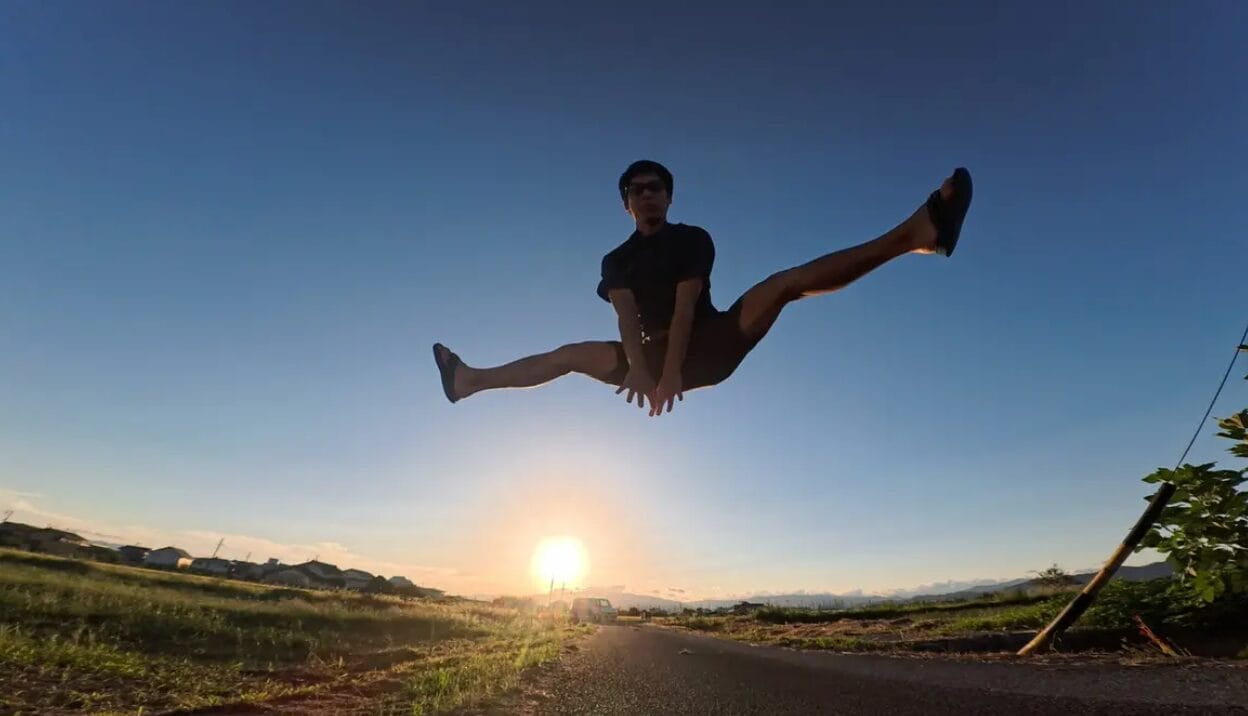
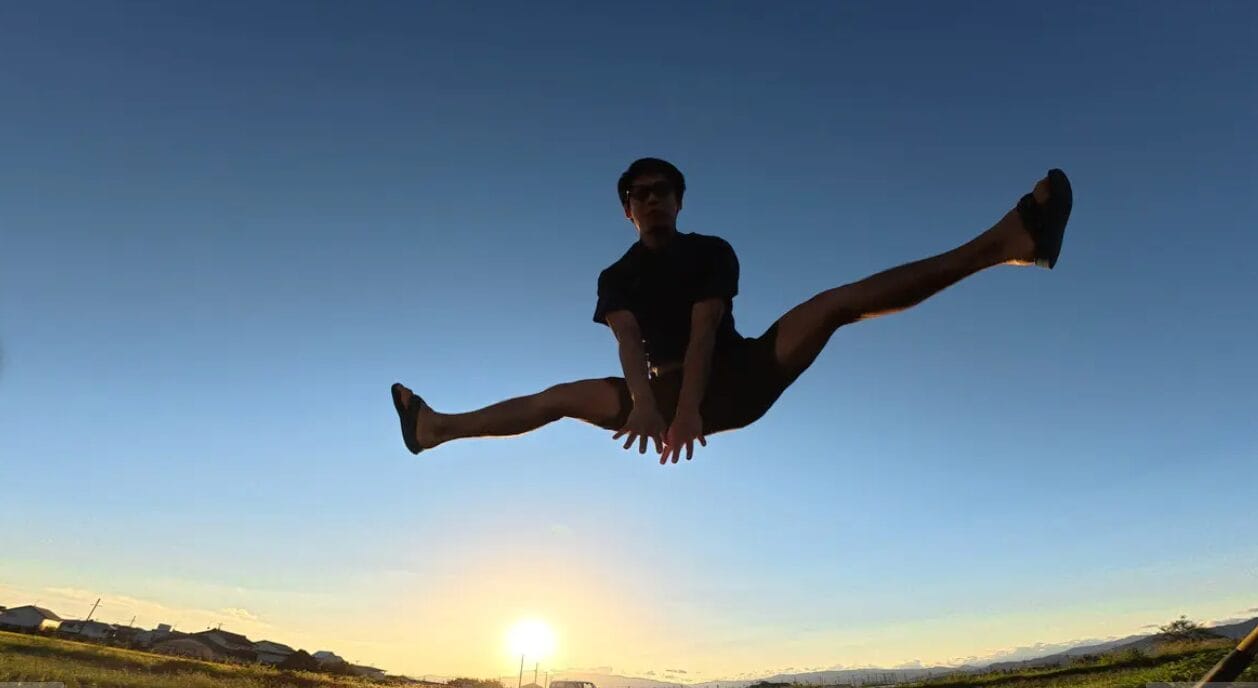
After shooting in the same scene, I edited a clip that clearly shows the difference. In the action of jumping and stretching his legs towards the camera, GO Ultra's field of vision is clearly wider, creating more dynamic tension and visual impact.
The wider the FOV, the more impressive the sense of spatial extension in the image. If you often shoot extreme sports, or need to create an exaggerated perspective effect, this difference deserves special attention.
Slow Motion Time-Lapse Recording
On the other hand, the Osmo Nano is a great performer in slow motion recording, continuing DJI's tradition of excellence. Although the frame rates of 2.7K and 1080P are the same, the Osmo Nano's 4K recording can reach 120fps, which is capable of recording 4x slow motion.
In comparison, the GO Ultra's 4K only supports up to 60fps and only up to 2x slow motion. If you often need to shoot high resolution slow motion footage, the Osmo Nano has a clear advantage in this regard.
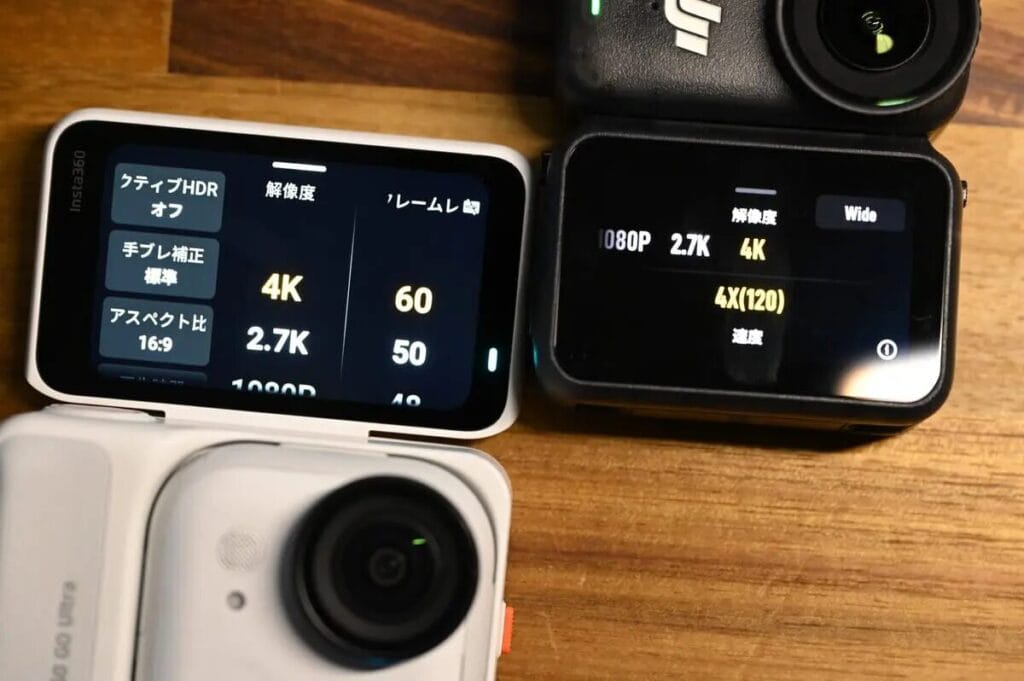
Picture Quality Comparison Summary
A quick summary of the quality comparisons, then on to the next topic!
- Overall Video Quality - GO Ultra Better.
- Color Performance - Osmo Nano Higher color saturation and excellent handling of backlit scenes
- Low light environment - both perform well ◎
- Angle of View - GO Ultra has a 156° wide-angle for more impactful shots.
- Slow motion - Osmo Nano Supports 4K 120fps with enhanced time-lapse recording performance.
Product Design
Let's move on to the exterior design. The difference in shape directly affects the user experience, so let's take a quick look at a few key points! For a clearer presentation, here are some photos to illustrate the differences:
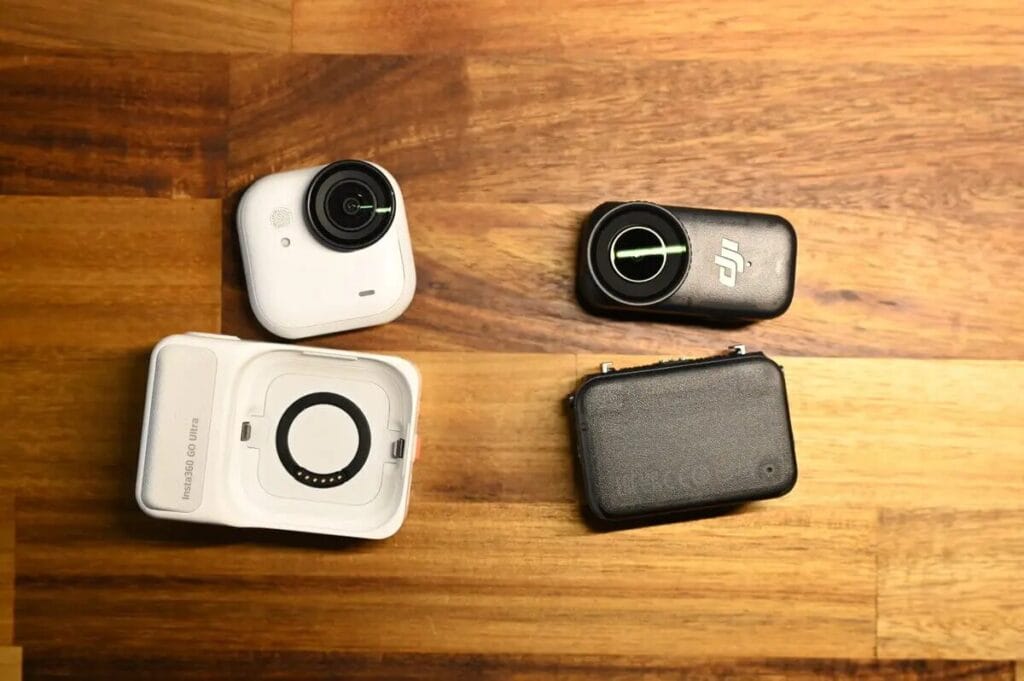
The GO Ultra has a matte finish for an upscale look, while the Osmo Nano has a skeleton design with an eye-catching brand logo for a more personalized look.
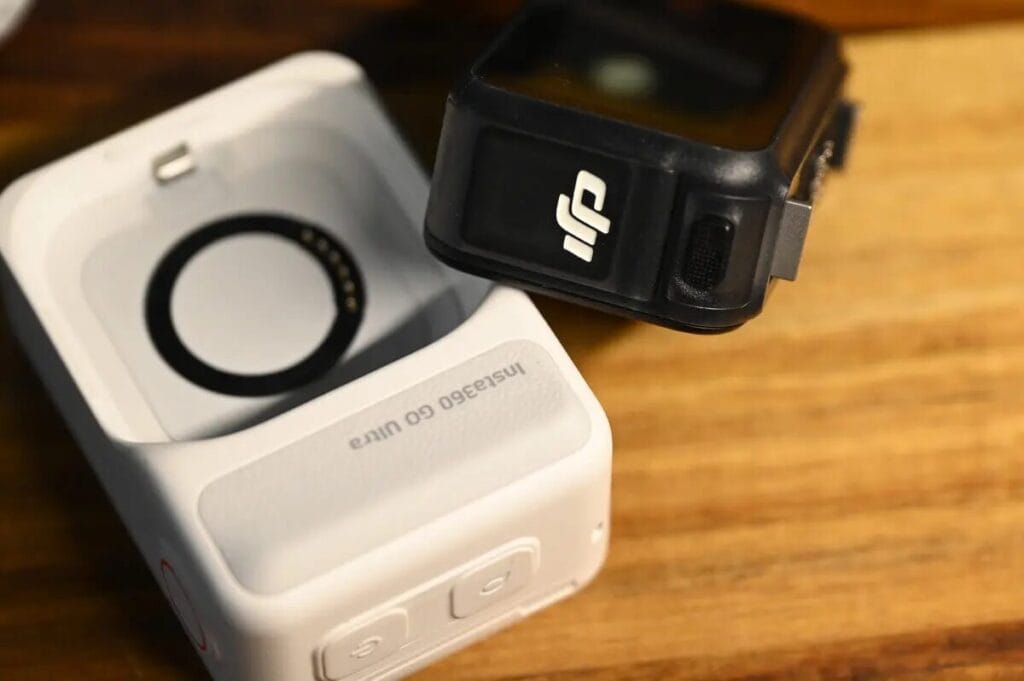
The lenses of both cameras are detachable. Even if they are accidentally damaged, the lenses can be replaced individually at a relatively low price, reducing maintenance costs.
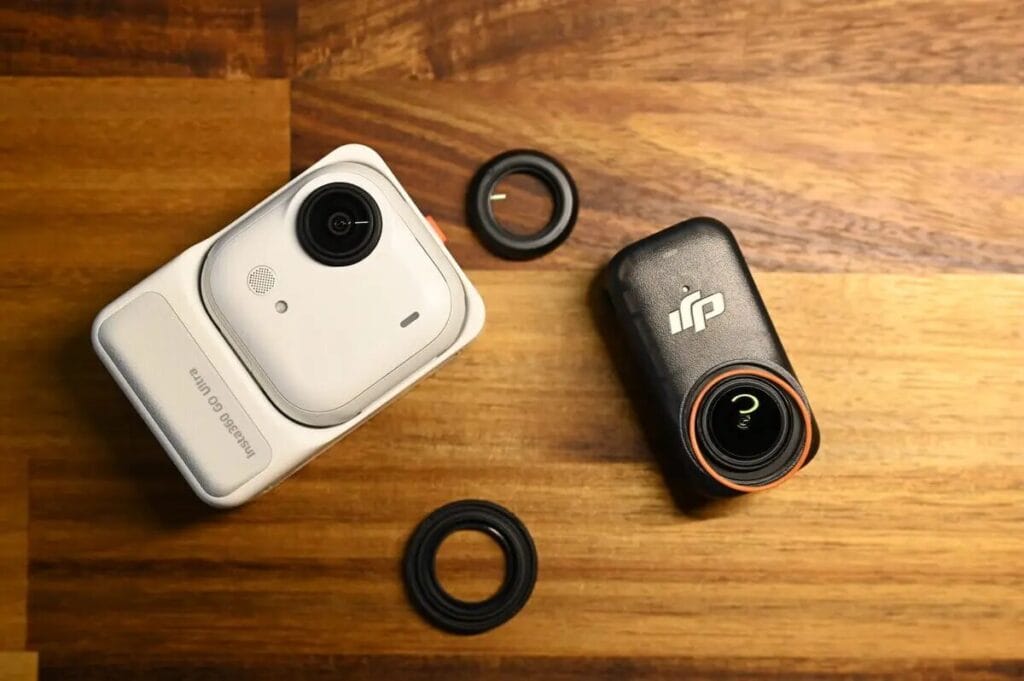
Body size and thickness
In terms of weight, the difference in weight between the GO Ultra and Osmo Nano is only 0.6g, which is almost negligible. However, with the case on, the Osmo Nano increases to 12.4g, making it feel heavier in the hand.
Frankly speaking, I originally thought that the Nano would be lighter, but it is not.The weight difference between the two cameras is much smaller than expected.
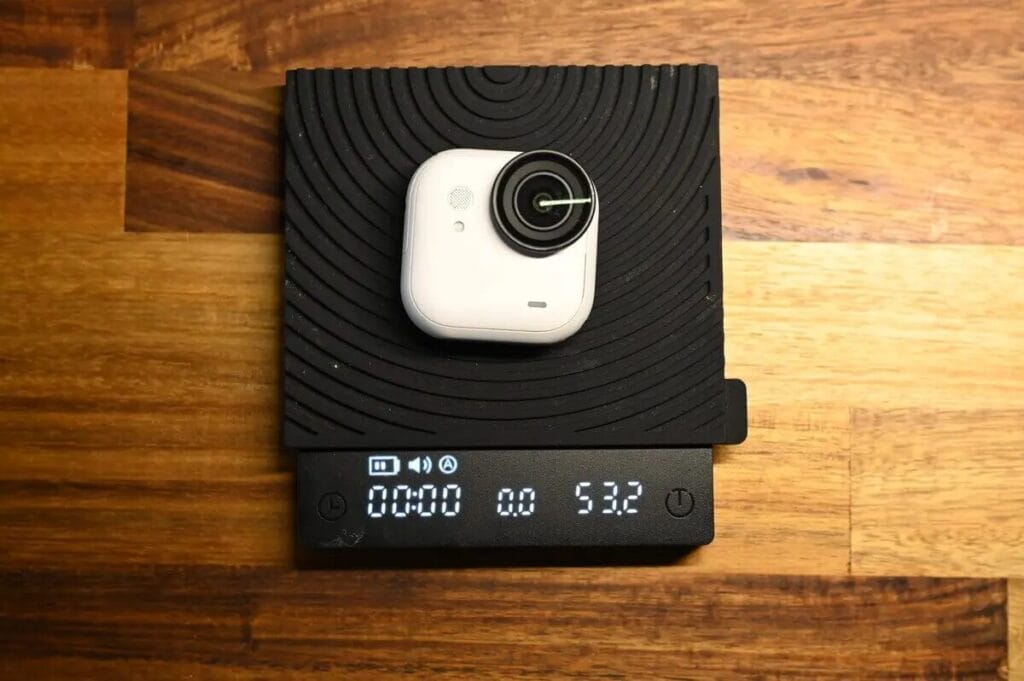
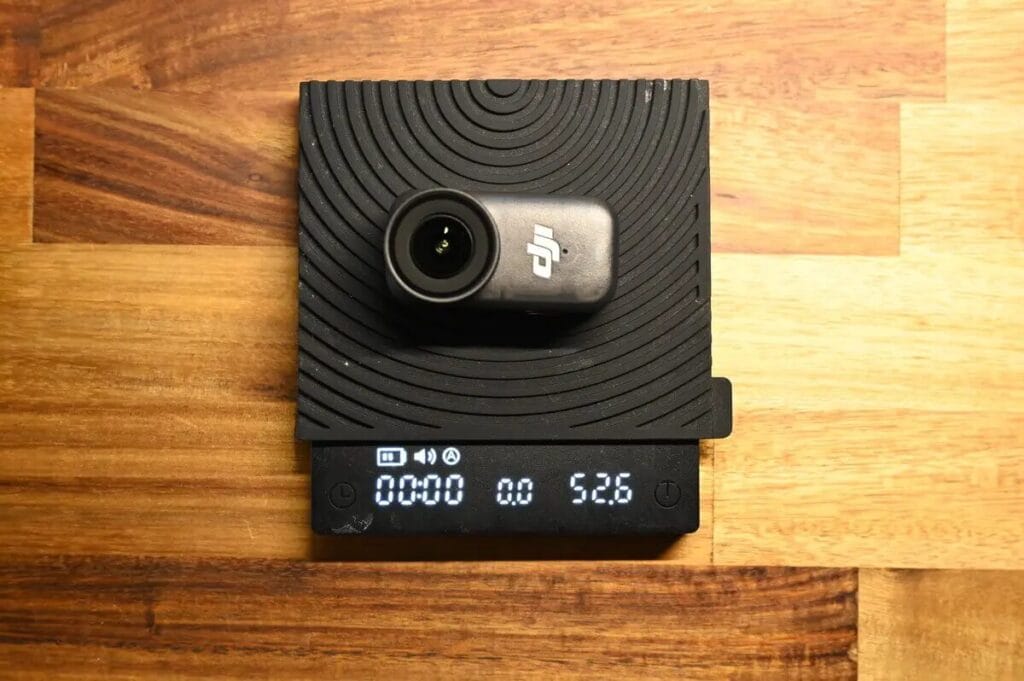
Overall, the Osmo Nano's single camera is indeed slightly lighter, although it's barely noticeable in daily use - for frequent hikers or long-distance trekkers, every gram counts.
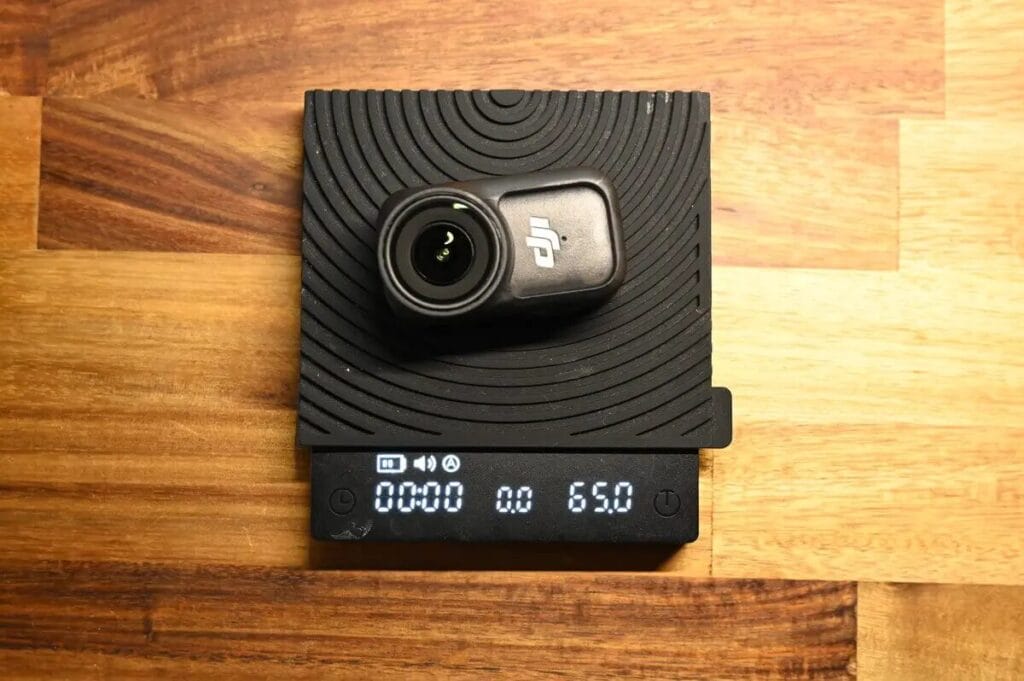
From the front, the Osmo Nano's silhouette is indeed smaller, but the thickness is noticeably thicker. Considering the 0.6g difference in weight between the two, it makes sense that the two cameras would have a similar footprint - on average, they're actually quite close in overall size. Incidentally, the GO 3S is significantly smaller when compared to the GO 3S.
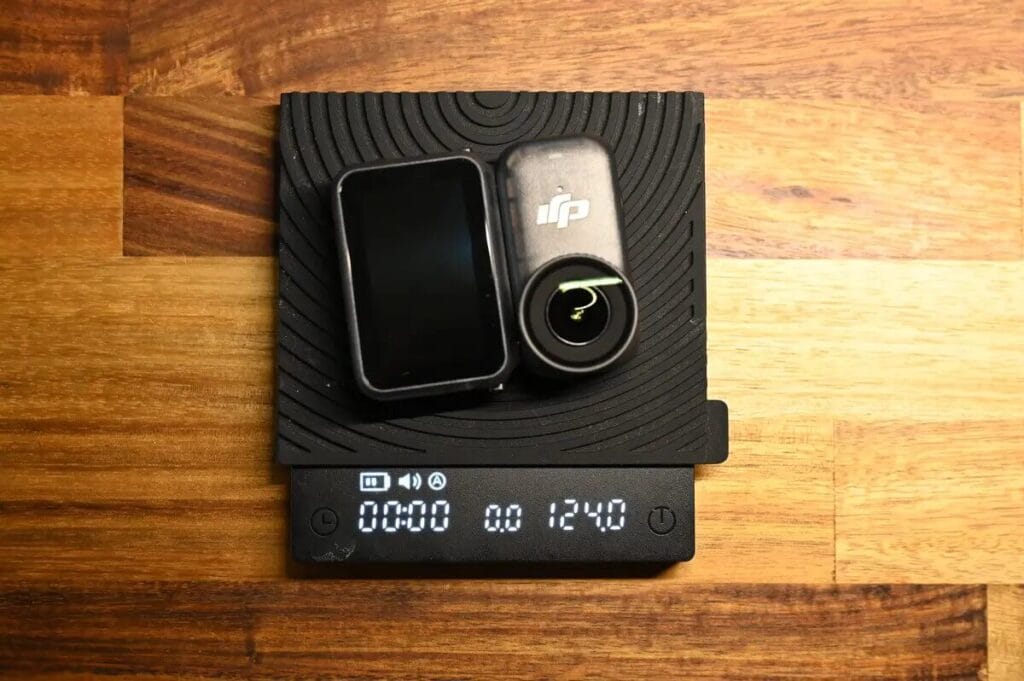
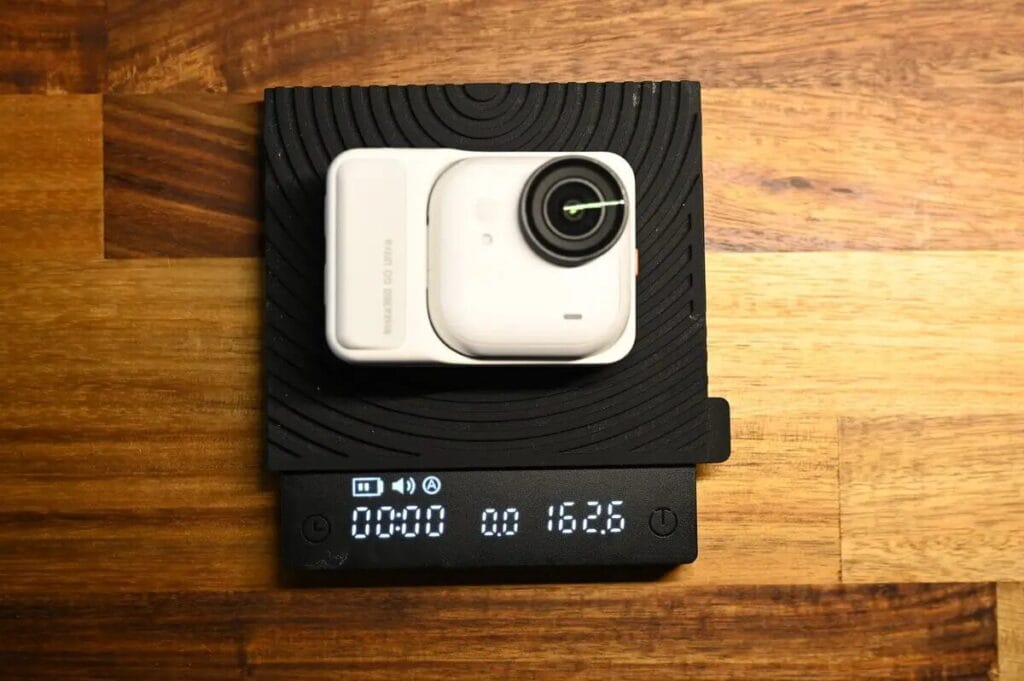
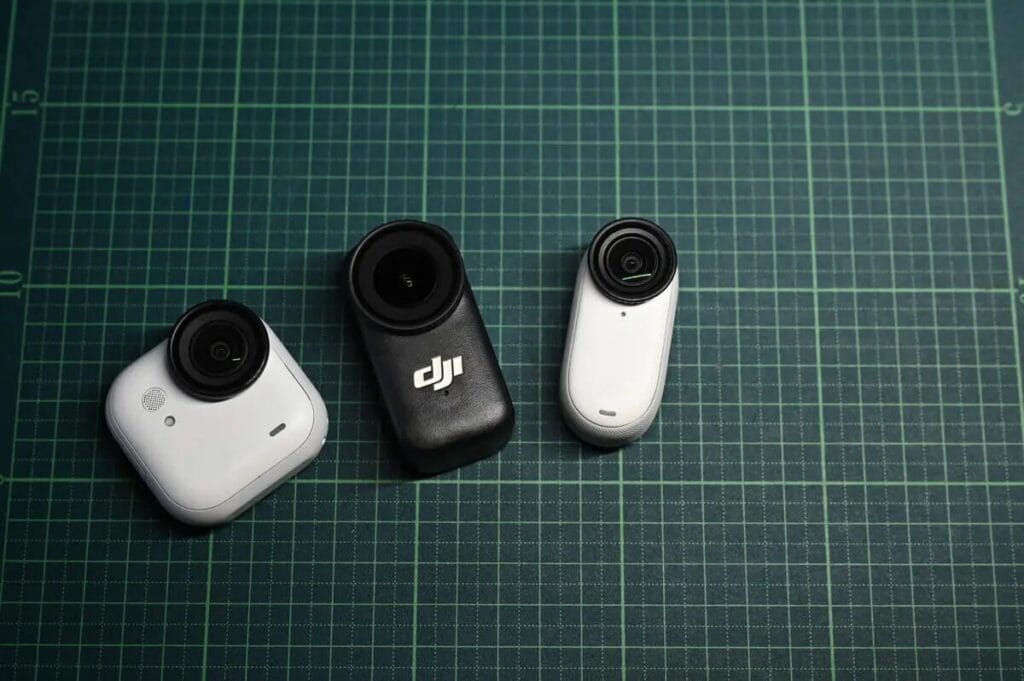
Another advantage of the GO Ultra is that it comes in a variety of colors to match your favorite style. In terms of understatement, the GO Ultra's design is relatively unobtrusive.
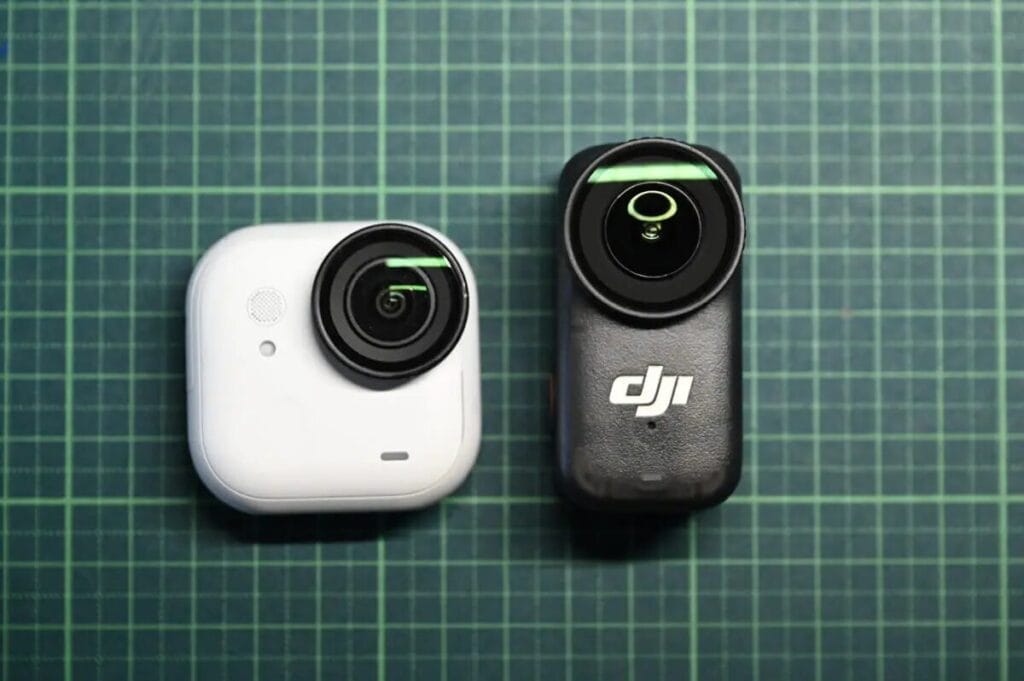
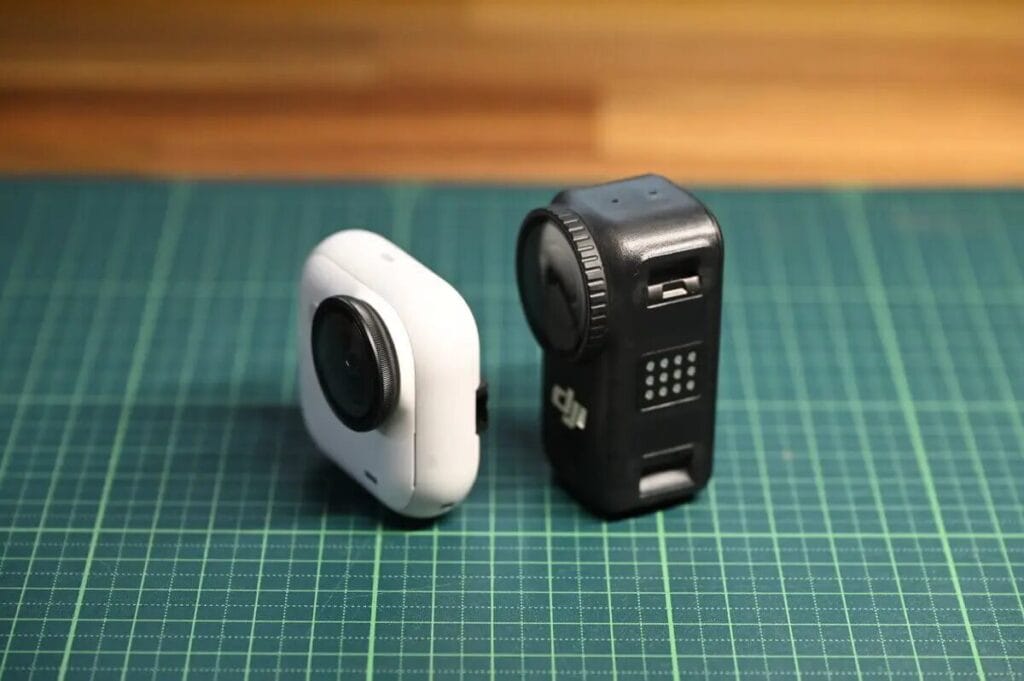
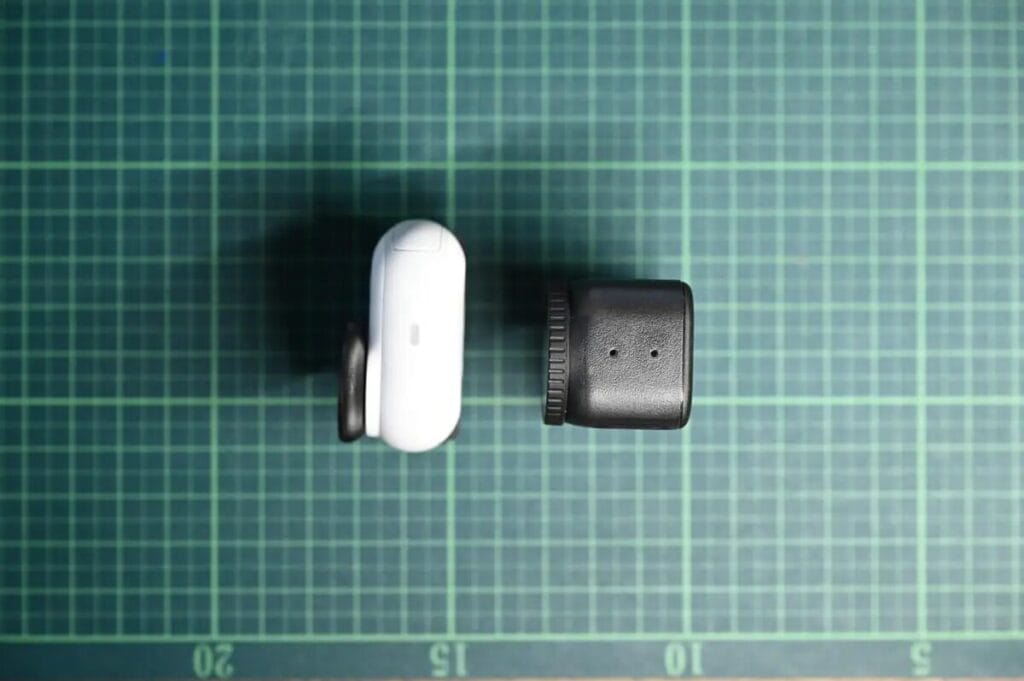
logo
The Insta360 GO Ultra camera has no logo, while the Osmo Nano camera has the DJI logo because the Osmo Nano has a smaller body and the branding is more visible on the camera.
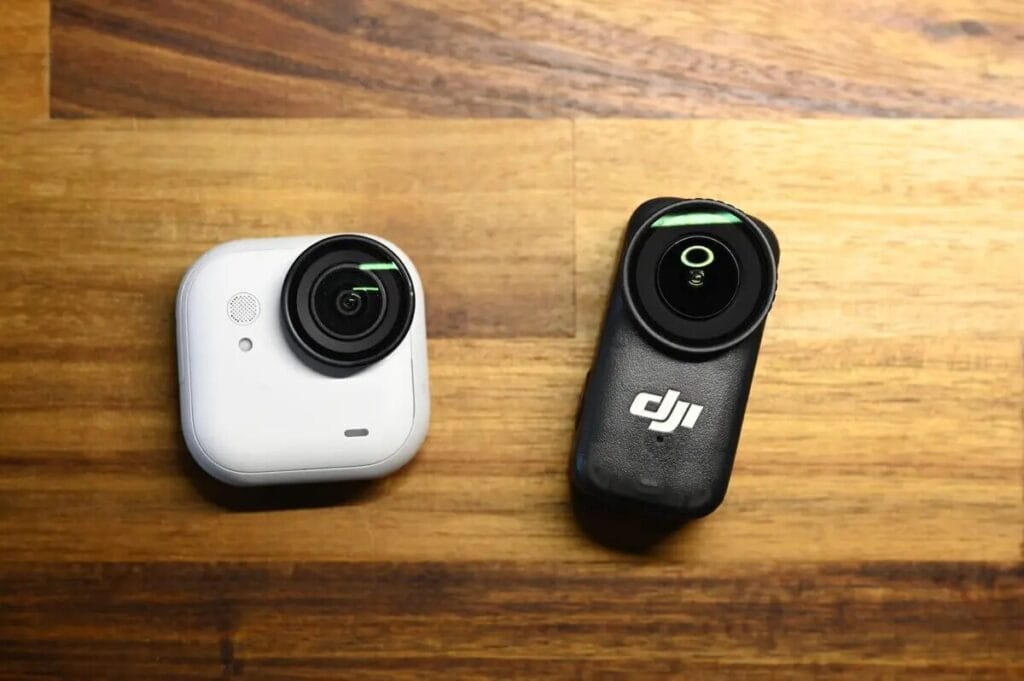
Since there is no obvious brand logo, the Insta360 GO Ultra blends in better with clothing when worn and is less likely to be the center of attention. However, some people think that the Osmo Nano's brand logo design is more personalized and cooler, so this is purely a matter of personal preference.
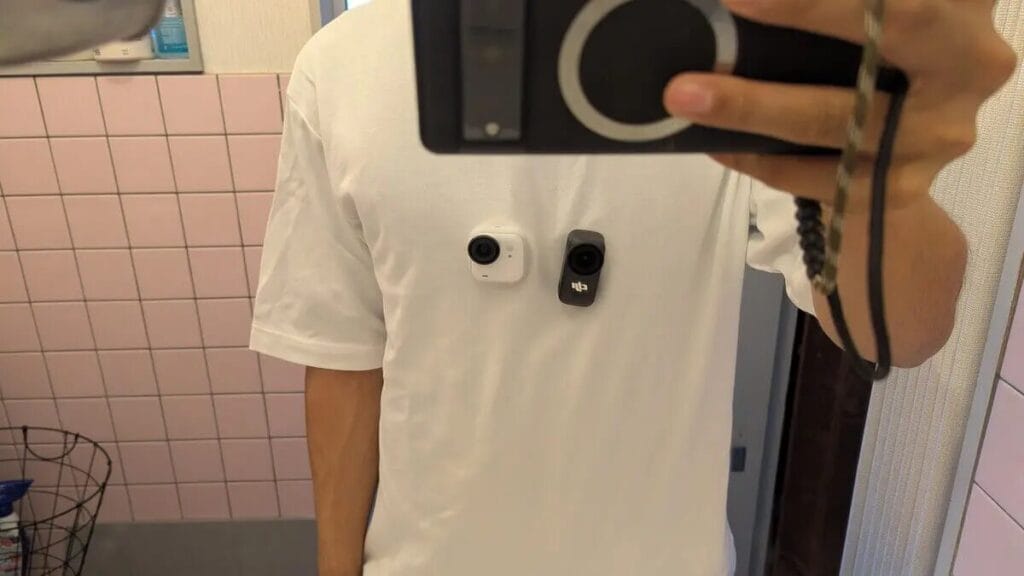
feeling of use
When worn as a sports camera, both perform very well. However, for handheld recording, the GO Ultra feels better in the hand, with a more ergonomically shaped body. However, it should be noted that the GO Ultra's rounded body tends to rotate when held alone, so you'll need to pay more attention to grip stability.
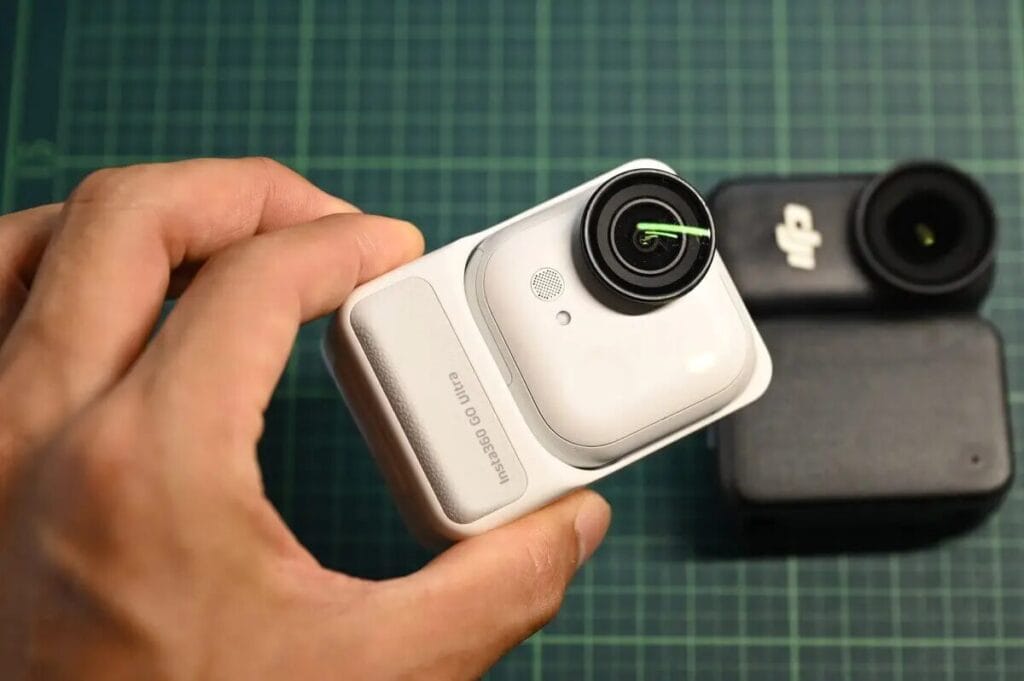
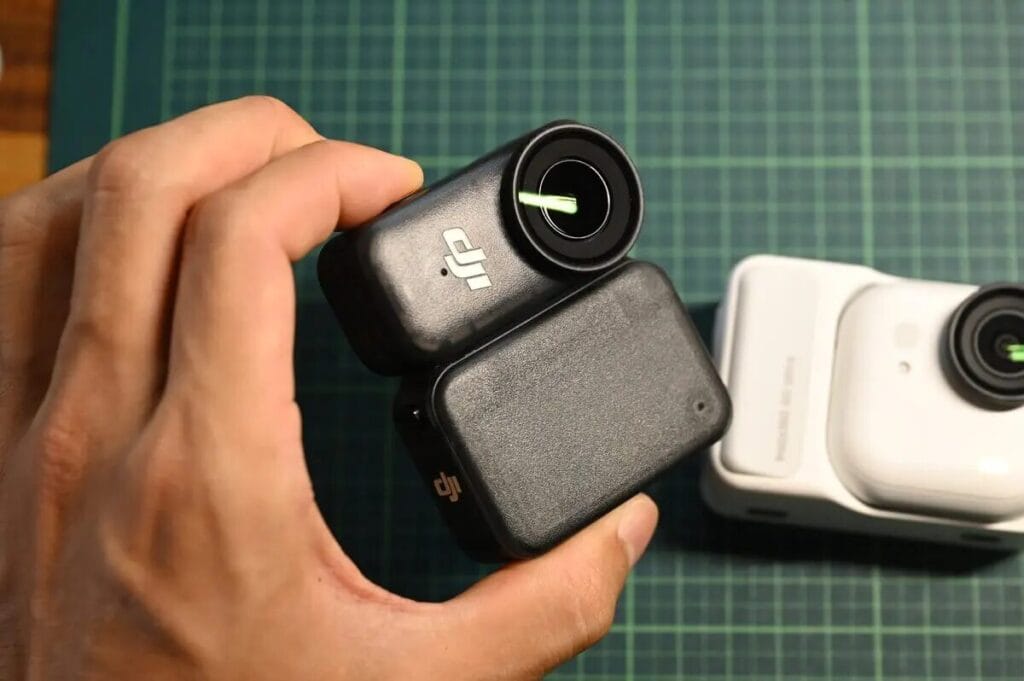
Screen Size
The GO Ultra's screen is larger and easier to see.
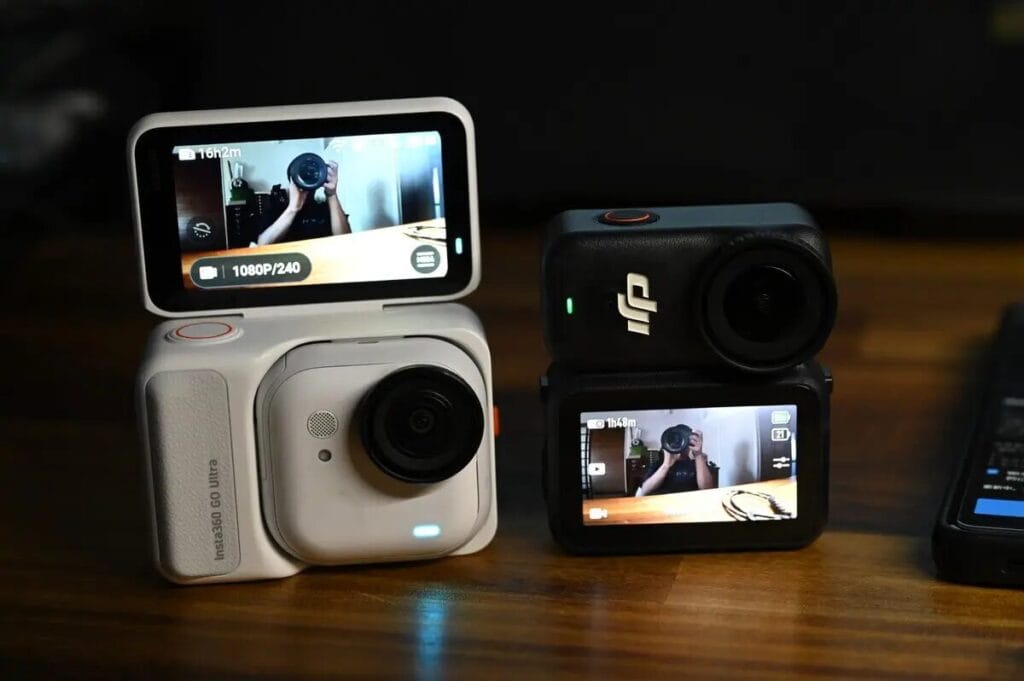
However, the Osmo Nano's OLED display is also very nice, and the previews are very clear. But when it comes to selfies and low angles, the GO Ultra's flip screen is better. </strong
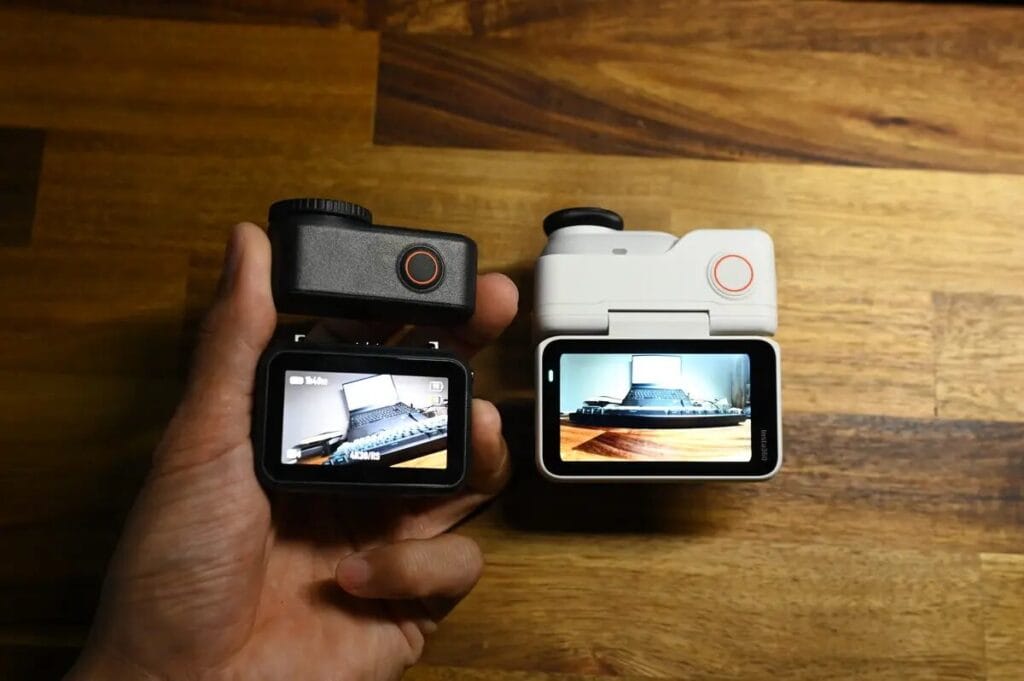
Standard Set Comparison
Compared to the standard package, the DJI Osmo Nano has an extra camera case.The
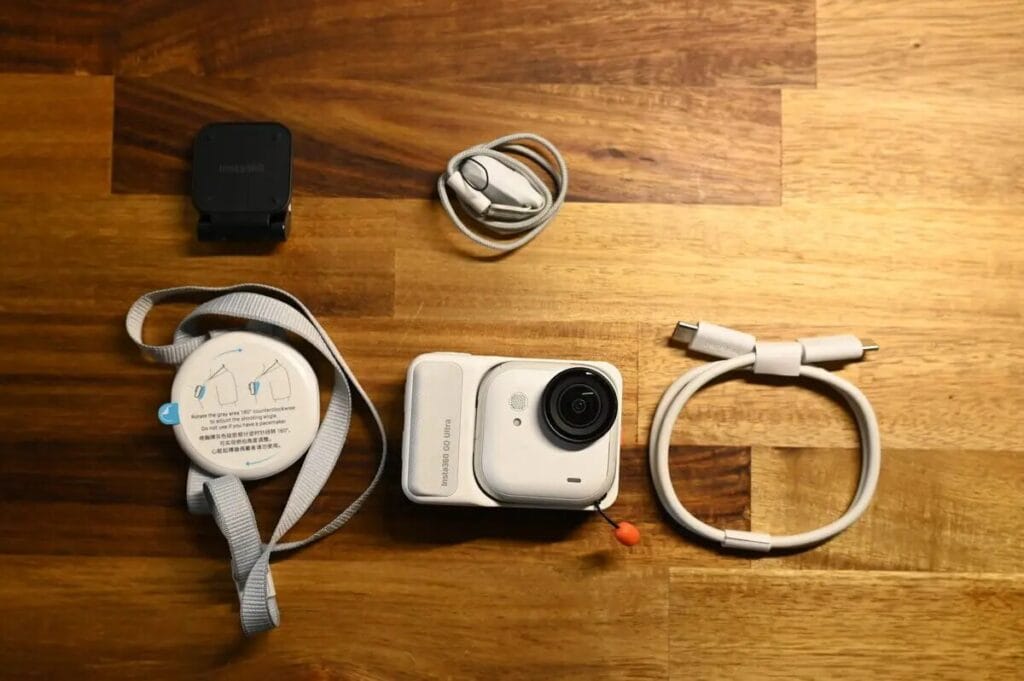
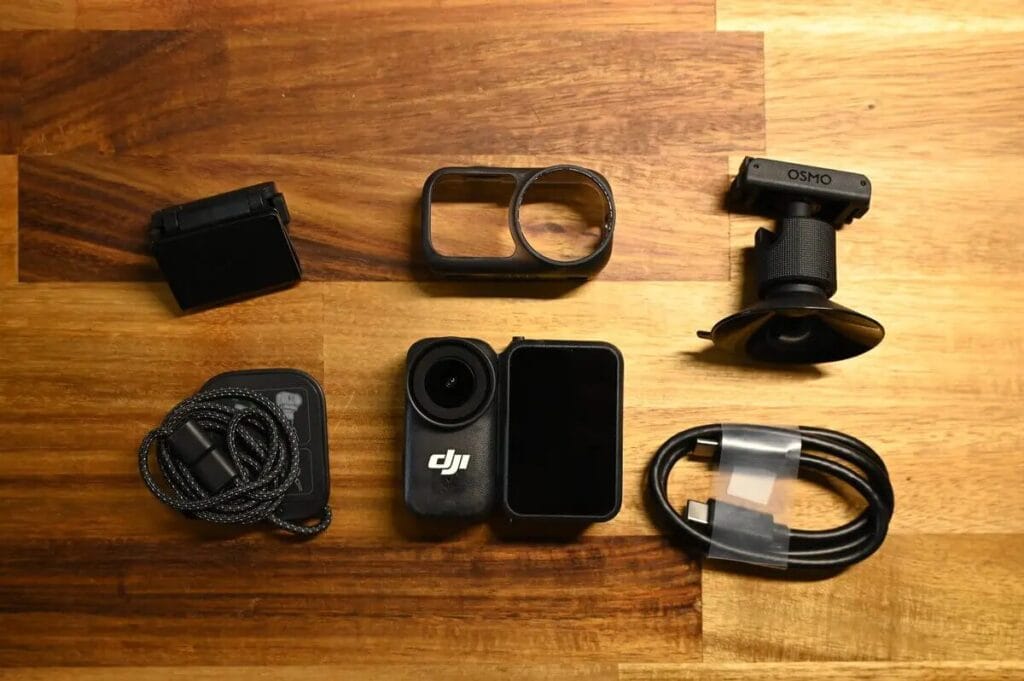
Installation and Wearing Style
Fixed to a T-shirt
Both cameras can be attached to a t-shirt via a magnetic pendant. In terms of low-profile concealment, I think the GO Ultra blends in better with the t-shirt and is less noticeable.
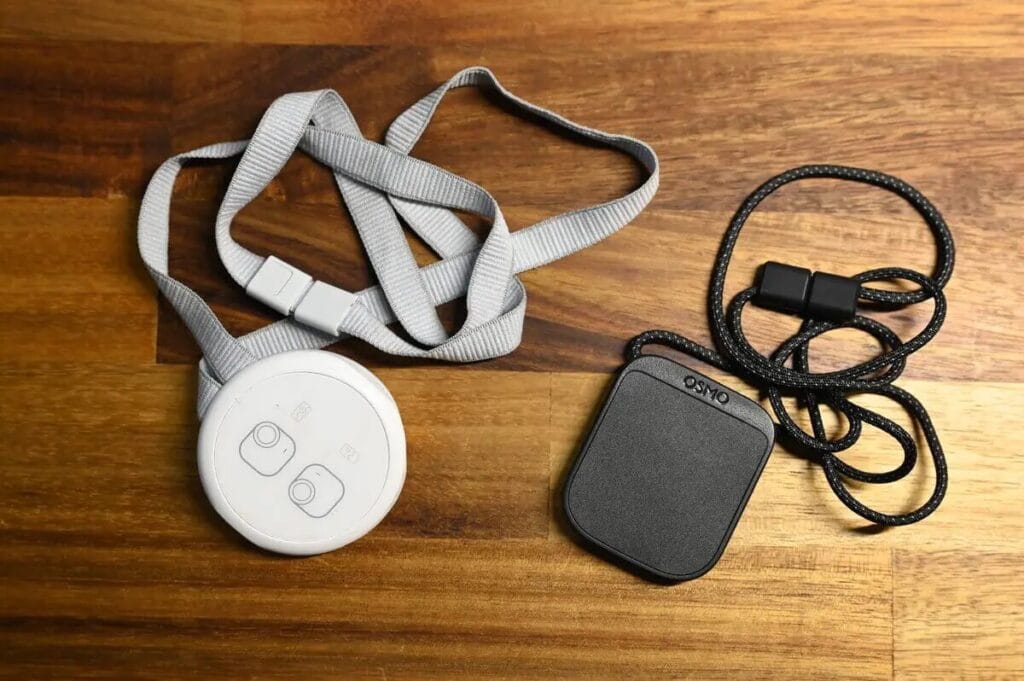

Wear it on your hat.
Both the GO Ultra and Osmo Nano come with a cap clip as part of the standard package, which allows the camera to be clipped to a hat for use.
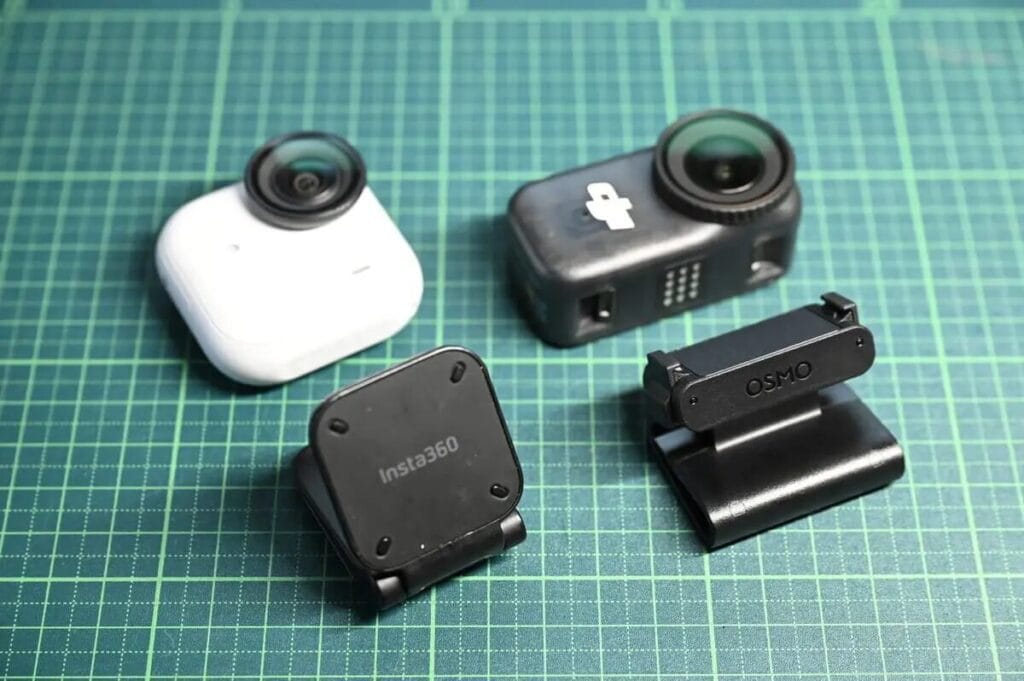
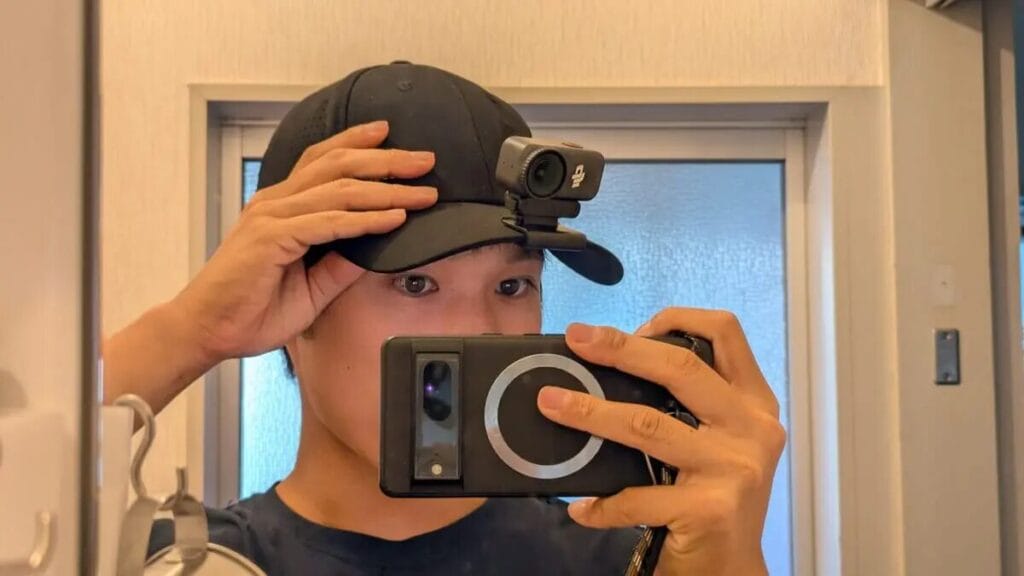
The GO Ultra needs to be used with the hat on backwards, whereas the Osmo Nano can be attached directly to the hood. While the GO 3S doesn't pose a problem when mounted on the brim, the GO Ultra weighs more than 50 grams and is noticeably heavier on the head. However, the GO Ultra weighs more than 50 grams, so there is a noticeable weight on the head when wearing it. Also, wearing the cap backwards makes the sun protection function completely ineffective (laughs).
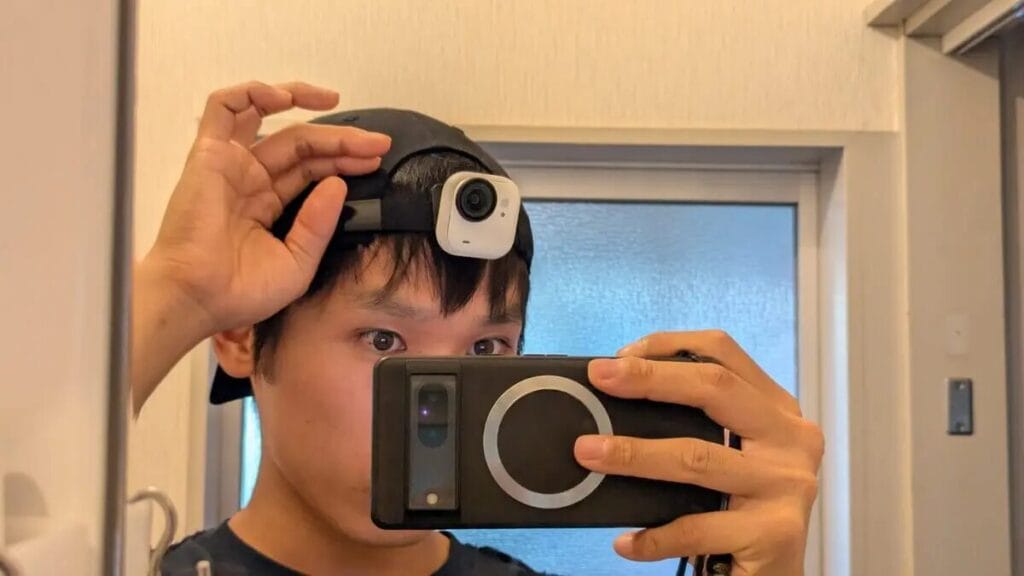
Use of rotating brackets
The GO Ultra's swivel bracket is double-fixed with adhesive and suction cups, while the Osmo Nano has only suction cups. The Osmo Nano is equipped with a suction cup only.
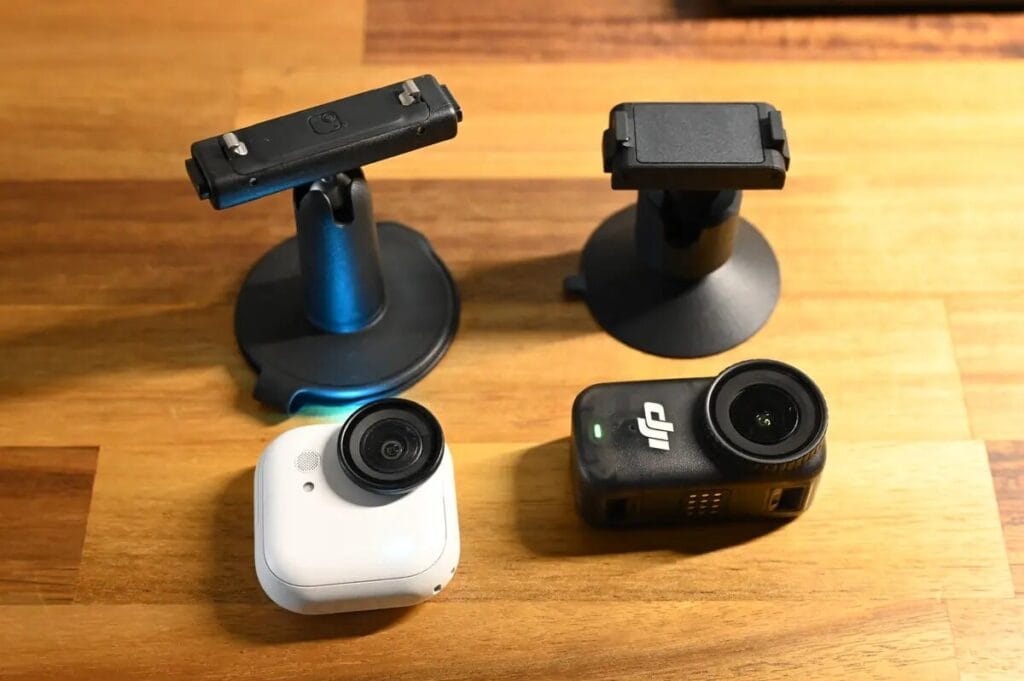
Adhesive suction cups are more versatile and can stick to wood or walls, but for convenience, GO Ultra But for convenience, the GO Ultra suction cups are a better choice.
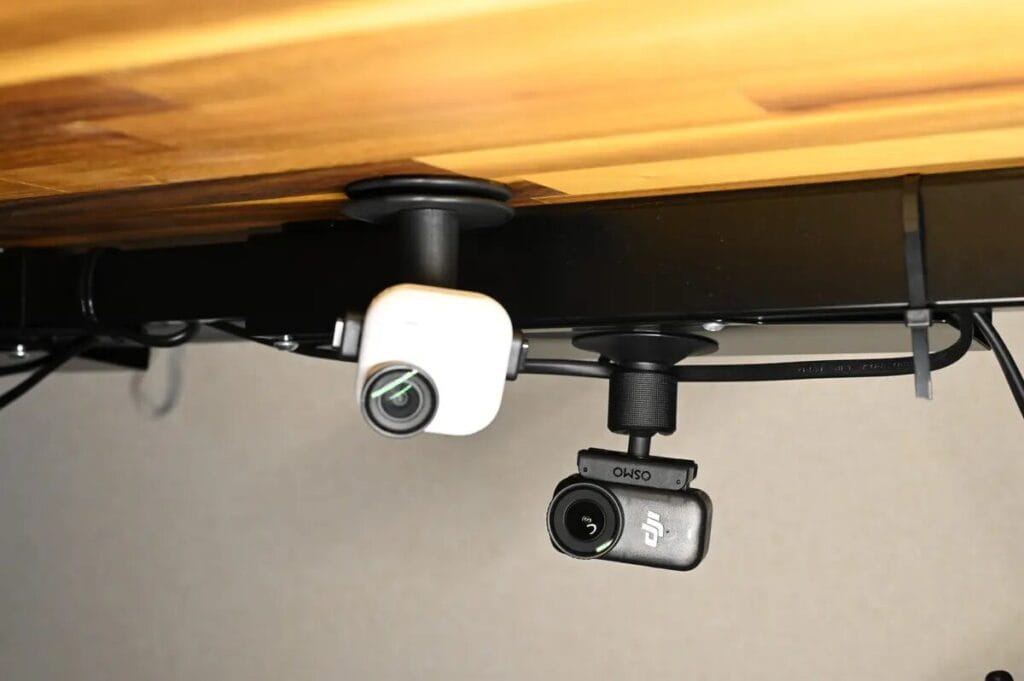
Camera Protection
To protect the camera. The GO Ultra uses a drawstring. but (not) Osmo Nano comes with a protective case. The
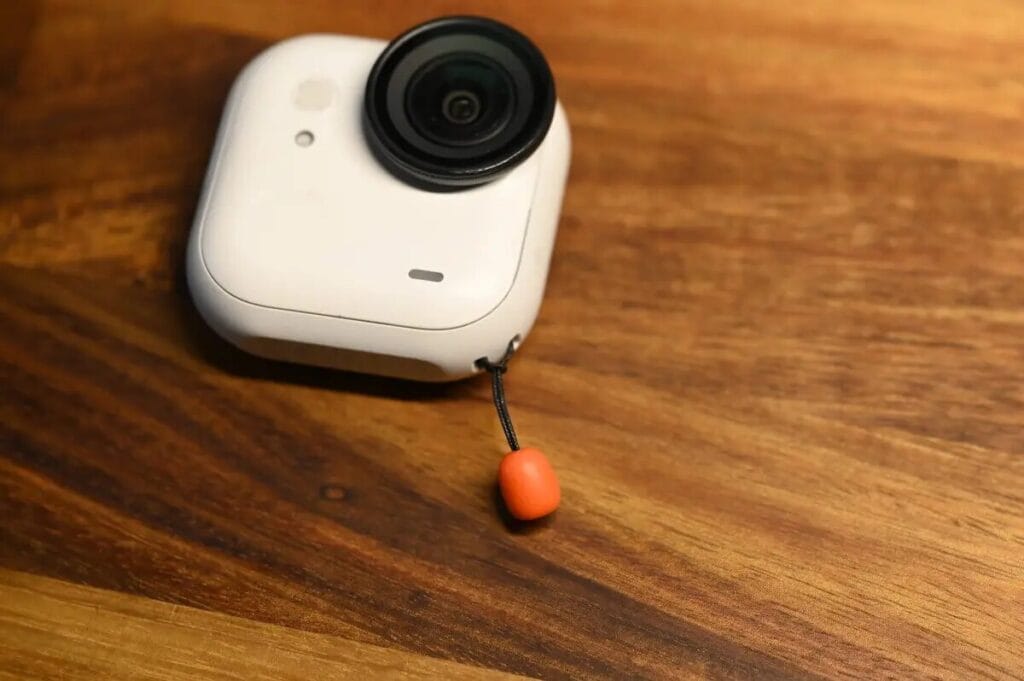
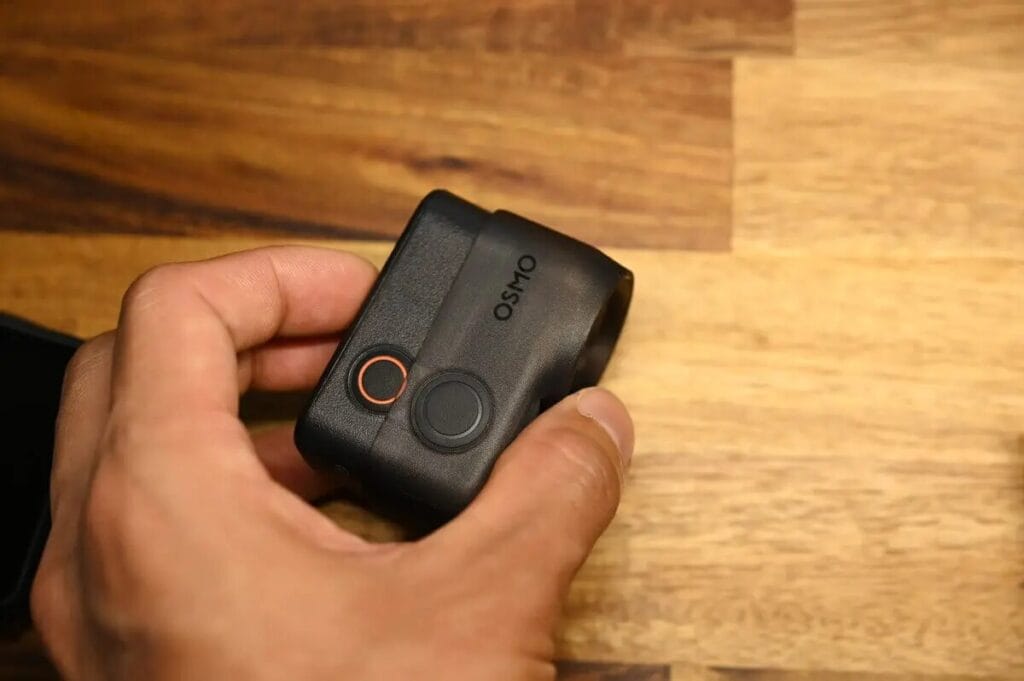
The GO Ultra body is stored in an Action Pod, so a case cannot be used. Instead, the Insta360 uses a tether to prevent it from falling. But if you accidentally drop it, the Osmo Nano's case will protect the camera even more. For example, if you ride a motorcycle or road bike and want to protect your camera even if you fall, a case may be a better choice.
Battery & Runtime & Heat Problems
As far as battery specs go, both are excellent, but the Osmo Nano camera overheating problem is much more serious.
| GO Ultra | Osmo Nano | ||
| Battery | Single Body | 500mAh | 530mAh |
| Action Pod | 1450mAh | 1300mAh | |
| Running Time | Single Body | 4K: 60 minutes 1080P: 70 minutes | 4K: 50 minutes 1080P: 90 minutes |
| Single Camera + Action Pod | 4K: 170 points 1080P: 200 points | 4K: 120 minutes 1080P: 90 minutes | |
| Charging Time | Single Body | 80% Charge: 12 minutes 100% Charge: 20 minutes | 80% Charge: 15 minutes 100% Charge: 30 minutes |
| Single Camera + Action Pod | 80% Charge: 18 minutes 100% Charge: 40 minutes | 80% Charge: 18 minutes 100% Charge: 50 minutes | |
| Support Temperature | -20°C ~ 40°C | -20°C ~ 45°C | |
| Fever | |||
Running Time
The Osmo Nano recorded 20 minutes more in 1080P mode, but the GO Ultra was up to 50 minutes ahead in 4K mode.
Charging Time
Both devices offer fast charging. The GO Ultra is fully charged in 10 minutes.
Fever
Camera overheating has always been a concern of mine. I was shooting at 4K 30fps (HDR on), which is a typical high load scene, and the Osmo Nano quickly stopped recording due to overheating.
| GO Ultra | Osmo Nano | |
| Fever stops recording | No heat. | Recording 22 minutes, 24 seconds. Post-heat shutdown |
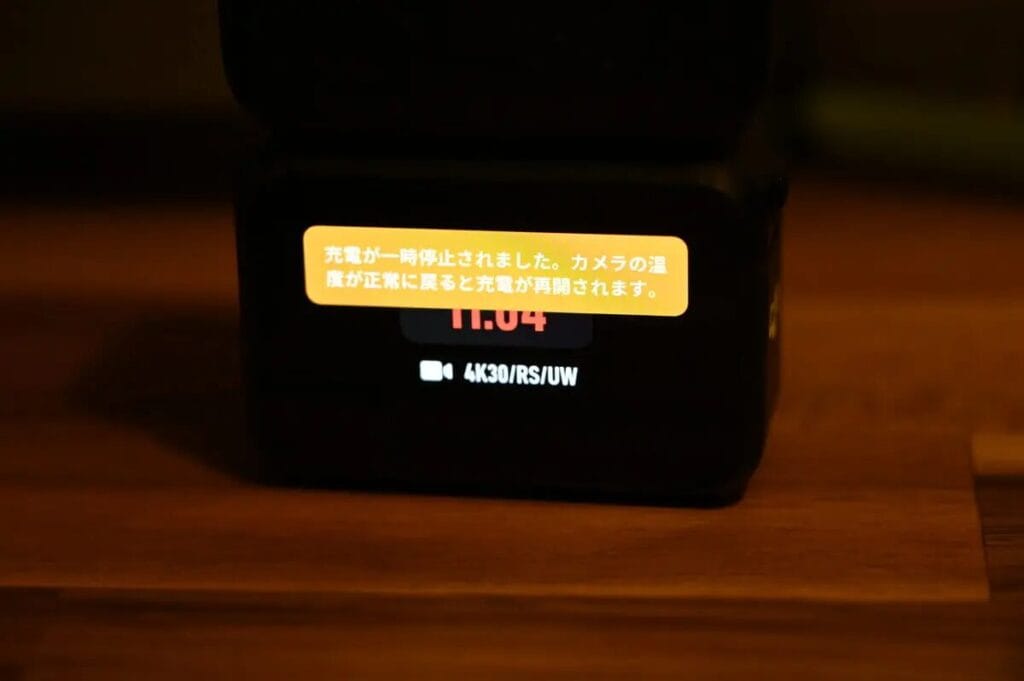
After less than 11 minutes, the message "Charging has been suspended" appears on the screen and the Action Pod stops powering the single camera.
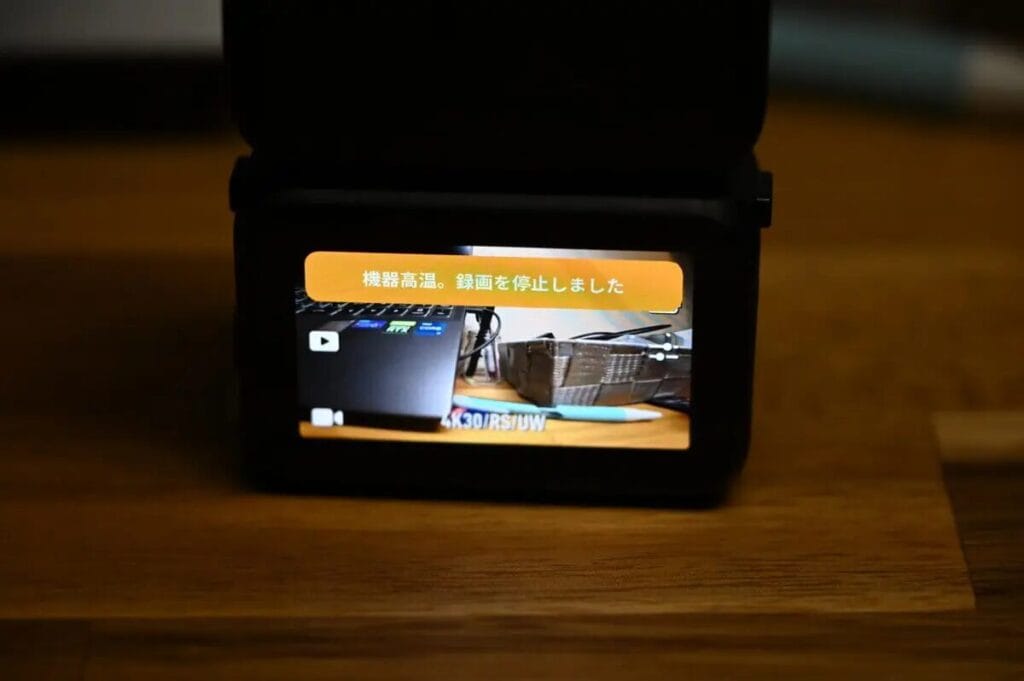
After that, the Osmo Nano stopped shooting due to high temperatures. This was quite a surprise, since this is a DJI product.
We tested the camera a total of five times, both when it was used alone and when it was placed in a storage case. We found that shooting at 4K 30fps stopped the camera after an average of about 30 minutes due to overheating. When switching to 1080P, recording resumed quickly after a short power failure, but it stopped again after only 22 minutes at room temperature due to overheating.
This seems to be a fatal flaw of the Osmo Nano. Officially, it claims to be able to operate in environments up to 45°C, but the actual performance raises questions about the authenticity of the specification.
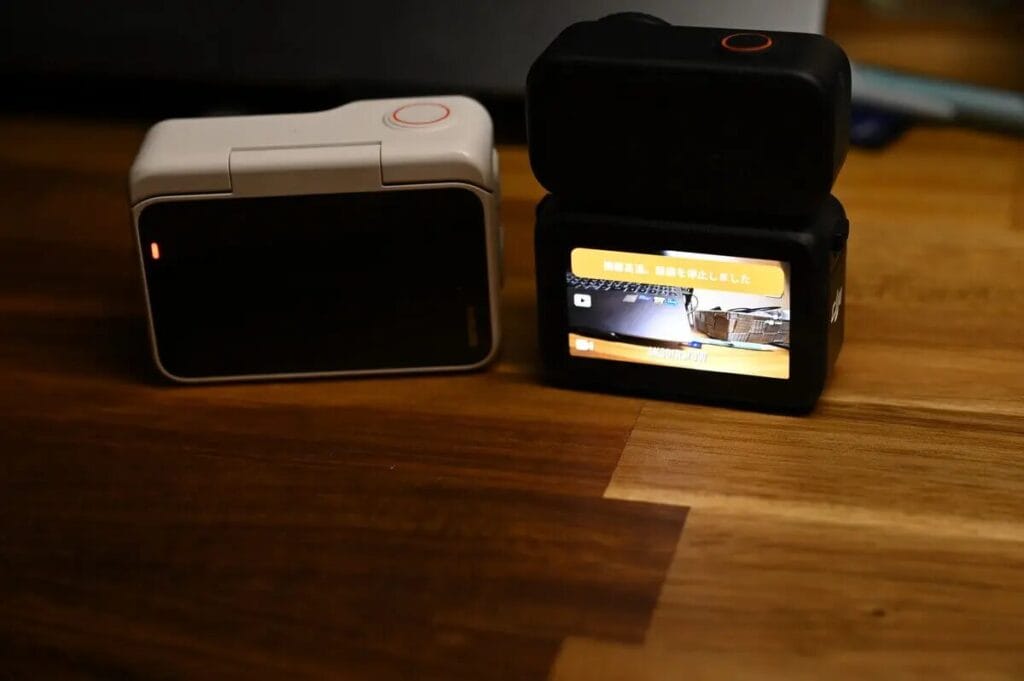
In comparison, the GO Ultra can record continuously for 2 hours and 15 minutes in 4K 30fps mode without overheating. It lasts 170 minutes in power saving mode and 135 minutes in non-power saving mode. This is a testament to the superior heat dissipation and stability of the GO Ultra.
5 Ways to Tackle DJI Osmo Nano Fever
The DJI Osmo Nano's tendency to heat up can be solved by trying the following methods, but for longer recordings than 30 minutes it is recommended to consider the Insta360 GO Ultra.
- Disconnect Vision Dock
The DJI Osmo Nano can record continuously at 4K 30fps for about 40 minutes if the record button is pressed without the Vison Dock connected. However, since the high-definition image processing causes the camera body to heat up, turning off the wireless communication of the Vision Dock (which is a high-load operation) can effectively extend the recording time.
- Segmented recording (pause every 5 minutes)
The easiest and most effective way to prevent overheating is to avoid prolonged continuous filming, and instead record 5-minute clips in segments, with a slight cool-down after the pause.
- Use the original protective case
- Turn off non-essential functions
Turn off voice control, disable remote control, dim screen brightness, disable external microphone
- Reducing the quality of paintings
For long duration recording, it is recommended to adjust to 2.7K or 1080p 30fps and switch back to 4K quality only at critical moments.
Microphone.
Regarding the microphone performance, I tested it in two scenarios: daily vlog recording and wind noise prevention mode.
Vlog Recording ↓
Both cameras record quite clearly. However, while the Osmo Nano sounds more natural, the GO Ultra sounds a little less so, especially in terms of sonic detail, and I felt that the GO Ultra captured footsteps and insect sounds about as well as the Osmo's 70%. From a personal point of view, I'd choose to use DJI's microphone. From a personal point of view, I would choose to use DJI's microphone.
Wind Noise Prevention
I tried it on a bike (with the wind noise reduction mode set to "weak") and on a car (with the wind noise reduction mode set to "strong"), and found that GO Ultra performs much better at reducing wind noise. The mesh design of GO Ultra reduces wind noise to a certain extent in both modes.
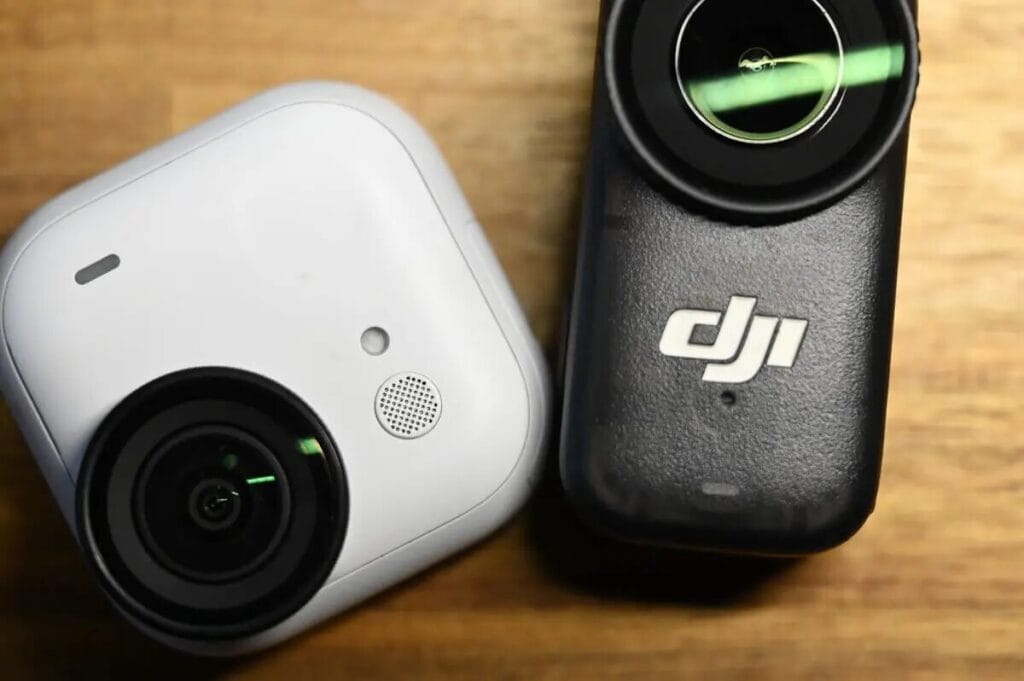
If you're planning to use an external microphone for video shooting or vlogging, the GO Ultra and Osmo Nano are both good choices. title="" target="_self">Mic Air, and the Osmo Nano is compatible with the DJI Mic 2. If you're using DJI's own If you're using DJI's own mic with the Nano, you can't currently monitor real-time footage on the split, so I don't know if a future firmware update will fix that.
When recording a vlog, I prefer to use an external microphone.
Mobile Application APP
Both cameras' APPs (DJI Mimo, Insta360 APP) are very feature-rich, and can satisfy your daily video post-production and editing needs. However, in my personal experience, I think the DJI Mimo is a bit less stable than the Insta360 APP. The DJI Mimo is a very good choice for video editing.
From a software perspective, Insta360 APP is significantly faster and smoother in terms of loading speed and editing experience.
What can I do with the APP?
Both the DJI and Insta360 APPs are full-featured and easy to use, so you don't have to worry about how to quickly edit your video after recording, whether it's automatically or manually, and the DJI Mimo and Insta360 APPs are similar in terms of operating experience. For reference, this is a video I recorded with GO Ultra and edited automatically with Insta360 APP:
APP Connection Stability
In terms of APP connection, Osmo Nano's app connection speed is slow ( # ゚Д゚)つ〃.
I found the Osmo Nano to be slightly unstable when connected to DJI Mimo, but did not experience this instability when using Osmo 360 or Action 5 Pro, so I think this is a processing issue with the Osmo Nano itself and not with the DJI Mimo app. I hope this problem can be solved by a firmware update.
Boot-up Speed
| GO Ultra | Osmo Nano | |
| Boot-up Speed | Approx. 3 to 5 seconds | Approx. 0.5 to 8 seconds |
The Osmo 360 has a very fast startup speed while the Osmo Nano has a slower startup speed. I found that when the Osmo Nano is in standby mode, it boots up very quickly, but if it has not been operated for more than 10 minutes, it takes longer to reboot the camera after it exits standby mode. the GO Ultra's boot up and shut down is much more stable.
Accessory Sets
Comparing the GO Ultra and Osmo Nano packages, it can be seen that both manufacturers emphasize on the three major scenes of "VLOG", "Running" and "Cycling". In addition, Insta360 has launched a special family set, while DJI has added a new car set.
In terms of accessories, Insta360's packages usually include more accessories, and each package comes with the quick-release bracket that's a must-have for GO Ultra recording, making it very easy to use.
What packages are available for GO Ultra?
| Bundle Name | Applicable Scenarios | Included Accessories |
| Creator Bundle Recommended | Vlog📹 | Quick Release Bracket, Mini Tripod Selfie Stick, Swivel Bracket |
| Running Set | Running 🏃 | Quick Release Bracket, Screen Protector, Headband, Backpack Clip |
| Cycling Bundle | Cycling 🚴 | Quick Release Bracket, Screen Protector, Strap Bracket, Sports Bracket |
| Family Bundle | Parent-Child Records | Quick Release Stand, Big Head Baby Set, Mini Tripod Selfie Stick |
Want to know more about GO Ultra accessories? Check out the reviews below
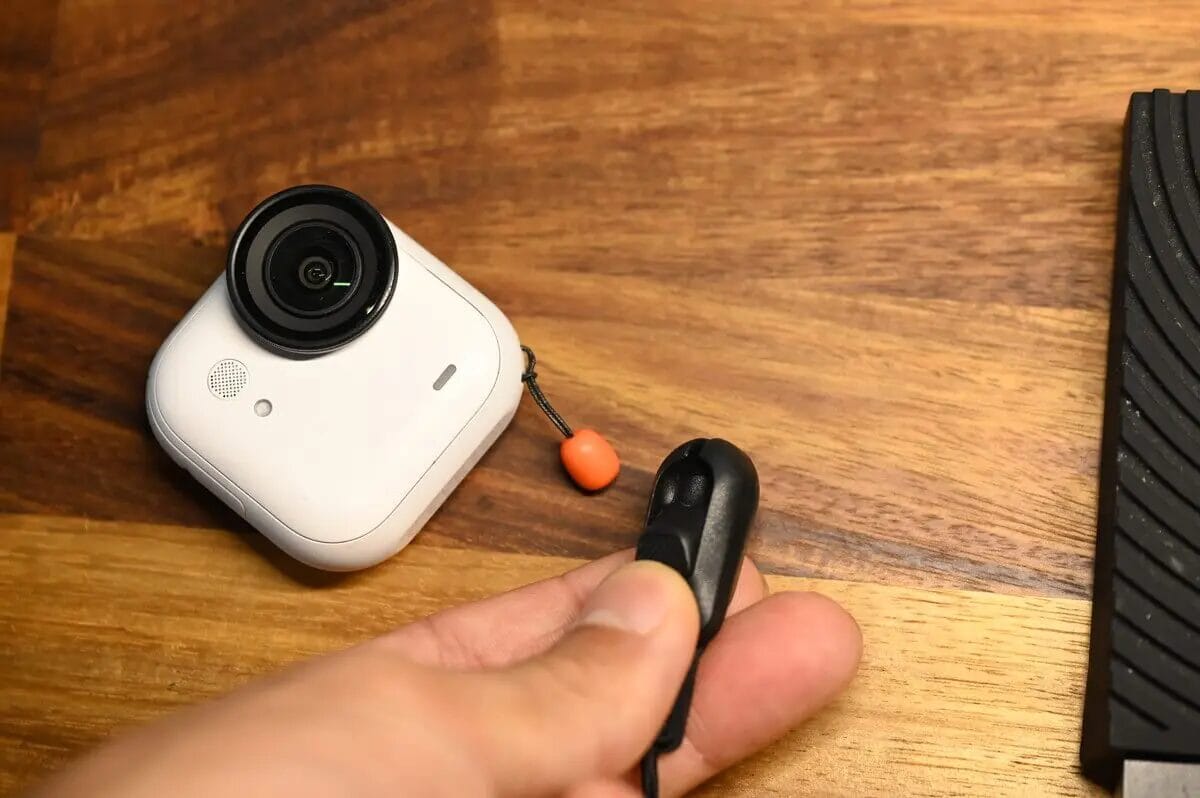
What packages are available for Osmo Nano?
| Bundle Name | Applicable Scenarios | Included Accessories |
| Running Set | Running 🏃 | Magnetic Headband |
| Vlog Set | Vlog📹 | Mic Mini Transmitter, 70cm Selfie Stick |
| Road Riding Set | Road Cycling 🚴 | Chest Strap, Flex Bracket, Car Seat Bracket, Quick Release Bracket |
| Car Kit | Drive a car. | Car suction cups, quick release brackets |
| Hiking Packages | Hiking ⛰️ | Shoulder Strap Bracket, Magnetic Headband, Quick Release Bracket |
Other Differences
There are a few other differences, so let's do a quick comparison.
| GO Ultra | Osmo Nano | |
|---|---|---|
| SD memory card support | ||
| Built-in Storage | ||
| Apple Find My | ||
| Voice Control | ||
| Gesture Control | ||
| 2x lossless zoom | ||
| Remote monitoring of recorded images |
Supports internal storage
DJI's Osmo Nano utilizes a dual memory design with built-in memory and an SD card, a configuration also used in the Osmo Action 5 Pro and Osmo 360. The built-in memory is a great convenience in case you forget to insert an SD card, and I really like this feature.
The Nano comes in 64GB and 128GB versions, both with different transfer speeds. I'm using the 128GB version and the transfer speed is up to 500-600MB/s. But the 64GB version is said to be 400-500MB/s only.
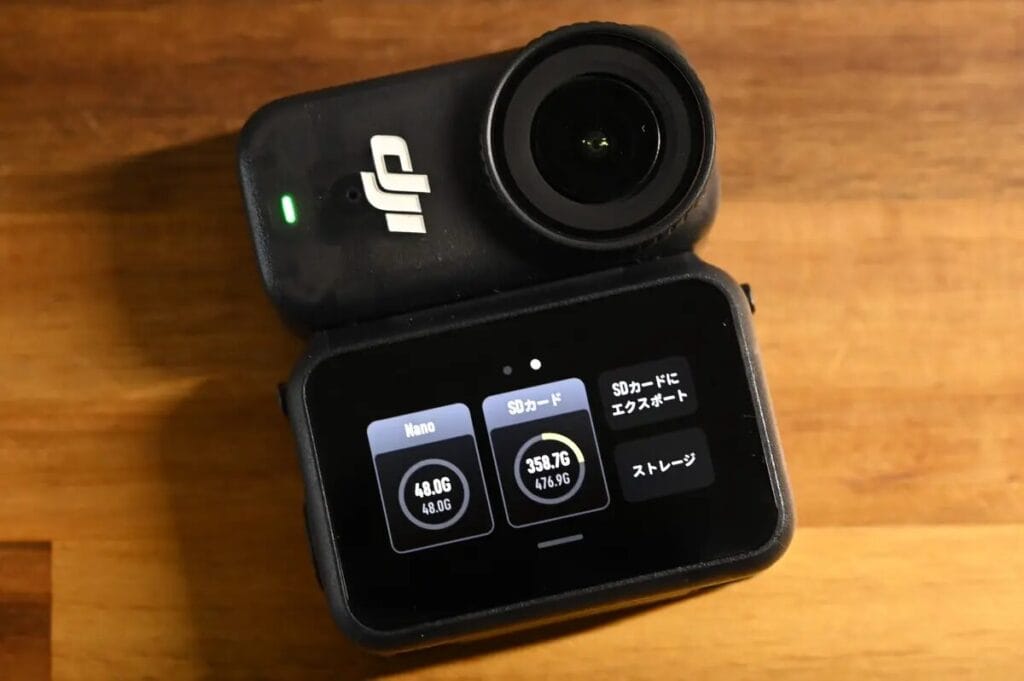
Apple Find My
GO Ultra is compatible with iPhone and features Apple Find My, which prevents it from being lost if it is accidentally attached to something or falls out of your pocket.
Voice and gesture control
The Osmo Nano adds gesture control, while the GO Ultra goes a step further with the ability to record or take a photo with a gesture or by showing the palm of your hand.The Insta360 is more comprehensive than the Osmo Nano in this regard.
| GO Ultra | Osmo Nano | |
|---|---|---|
| Video Recording | Face palms | clap twice Nod twice. |
| Photography | Peace sign | |
| Voice Control | Japanese English Chinese | English Chinese |
2x lossless zoom
Only GO Ultra supports 2x lossless zoom, which is very convenient. This is a very convenient feature, and it allows you to zoom while maintaining 4K image quality. I personally use this feature a lot because it can completely change the composition and expression of the image.
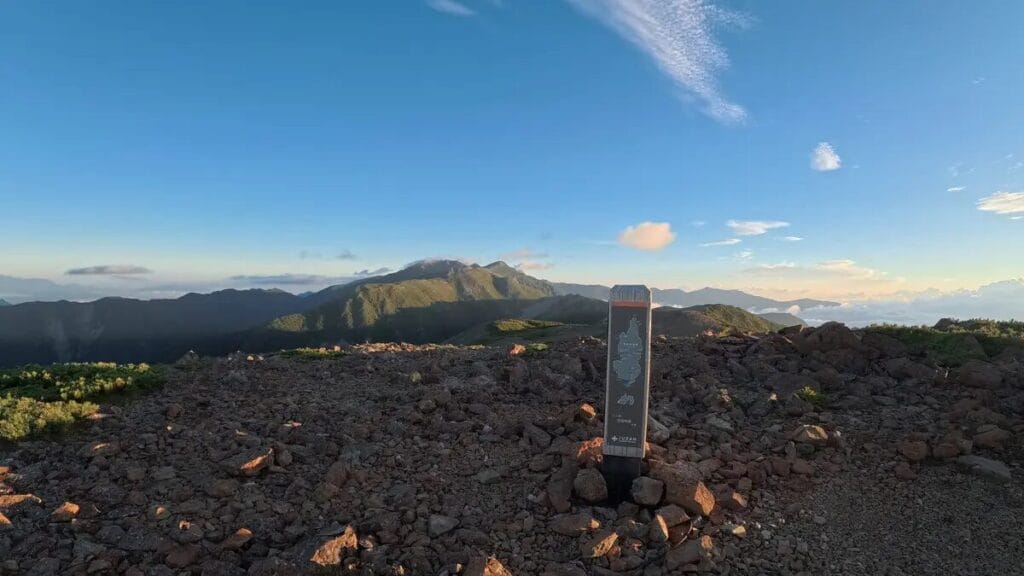
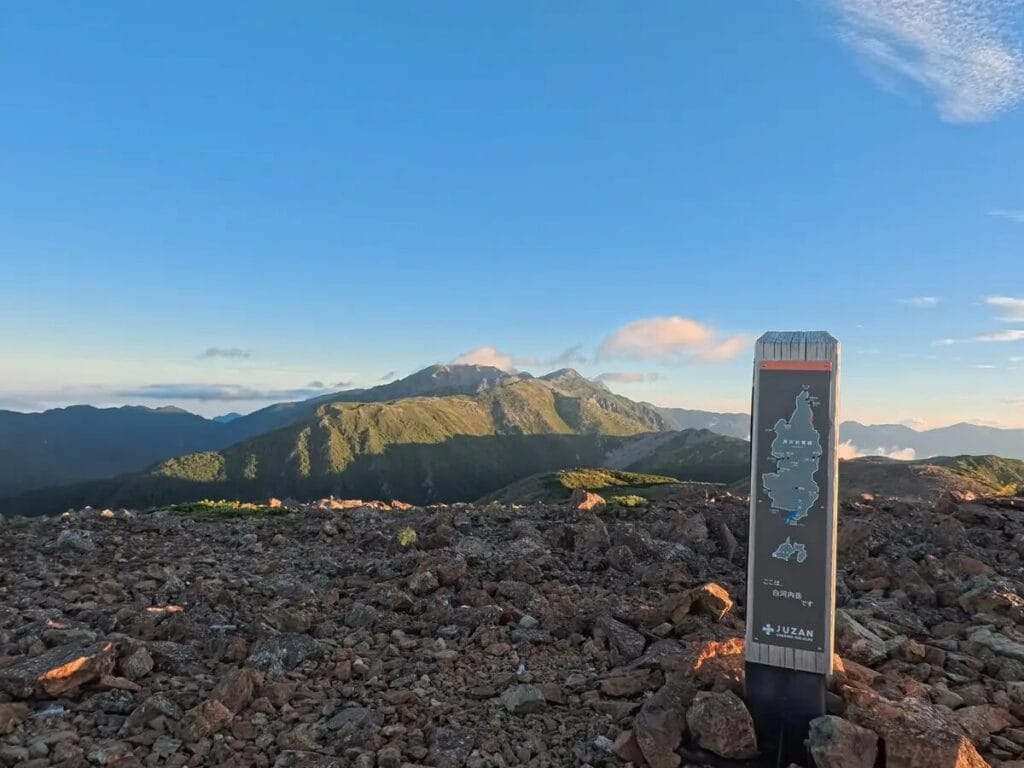
Remote monitoring of recorded images
Another handy feature of the GO Ultra is that you can check your recorded videos remotely. This means that you can mount the camera remotely and view the recorded footage directly on the screen in front of you. I think this is a very useful feature, as it's quite tedious to have to put the camera back on the Action Pod every time you want to check it.
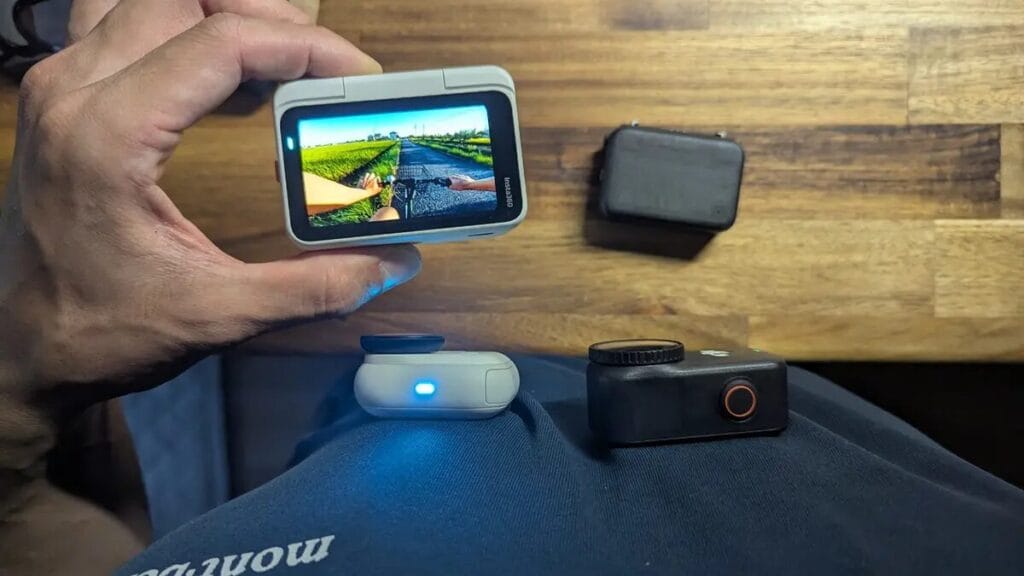
While the Osmo Nano has its advantages in terms of built-in memory, the GO Ultra may be superior when considering other handy little features and a stress-free experience.
Similarities
anti-shake
In my opinion.Both DJI and Insta360 cameras have a "no worries" level of stabilization.Even when riding a mountain bike or cross-country bicycle, the anti-shake effect is still excellent.
- The GO Ultra offers four anti-shock settings: "Off", "Low", "Standard" and "High".
- The Osmo Nano offers three setting options: "Off", "RockSteady" and "HorizonBalancing".
When shooting with the GO Ultra, I use the "standard" image stabilization settings for both cycling and handheld shooting. With the Osmo Nano, I use RockSteady's wide-angle setting.
Waterproofing
Both are waterproof in the same way, the single body itself can be used normally in shallow water, but if it is completely submerged in water there will be problems. Technically, the entire body is IPX4 rated, so getting a little bit of water is not a problem, but if you drop it into a lot of water, it may crash.
| GO Ultra | Osmo Nano | |
|---|---|---|
| Single-body waterproof rating | 10m waterproof | 10m waterproof |
| Waterproof grade | IPX4 | IPX4 |
Remote control of the camera
As I mentioned before, remote video checking is only possible with the GO Ultra. However, both cameras allow remote monitoring before shooting. Therefore, when shooting with the Osmo Nano, it's a good idea to check the composition carefully before taking the picture.
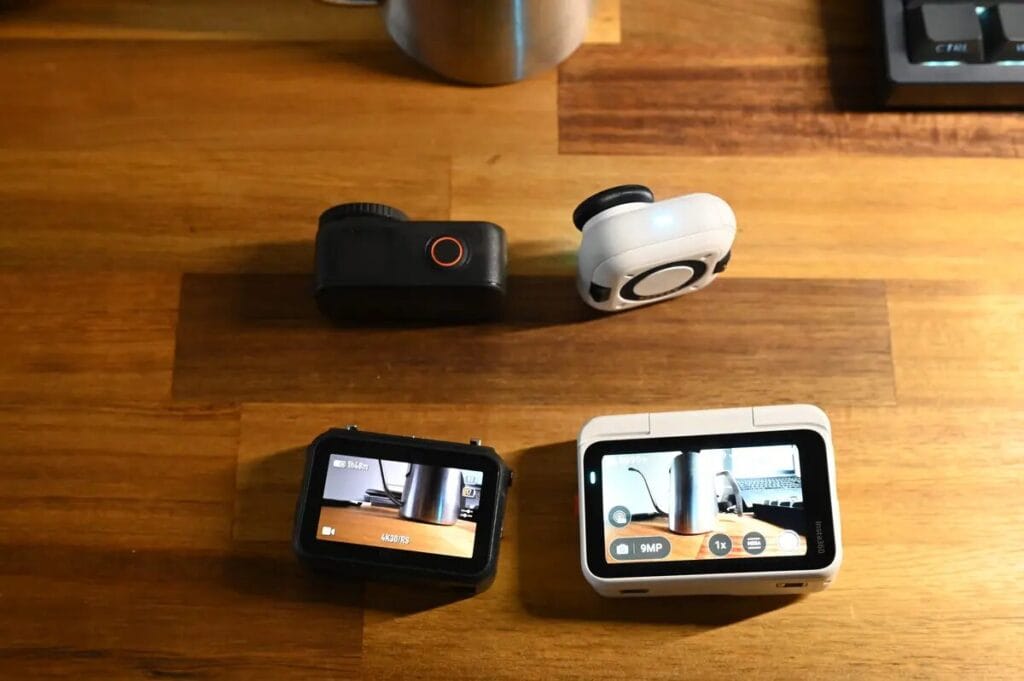
Who is the Insta360 GO Ultra & DJI Osmo Nano for?
Unwilling to compromise on functionality or user experience
If you're all about product integrity, I highly recommend getting the GO Ultra. GO Ultra. Even though it's a little more expensive than the Osmo Nano, the extra cost is well worth it, as the GO Ultra offers some advantages that the Nano does not:
- Stable, good picture quality
- No heat
- Application Software APP Connection Stability
- It's easy to check remotely.
- Flip Screen Design
- Supports fast charging
- Windproof, good microphone sound.
Price
If price is your main concern rather than the full functionality of the product, then the Osmo Nano is priced very attractively indeed. It's 1.5 times cheaper than the GO Ultra and has a great price/performance ratio.
Vlog scenes, dressed in private clothes to record, don't want the camera to be too conspicuous.
The GO Ultra is available in black and white, and doesn't have a big logo on it. There is also no big logo on the product, so it doesn't look out of place when worn with casual clothes. I think the design is suitable for all genders.
Sports scenes, slow motion time lapse will be recorded.
On the other hand, only the Osmo Nano is capable of 4K 120fps. Since it fits into a protective case, there's little risk of damage even if it's dropped in the middle of a shoot. I recommend the Osmo Nano for those who like to record slow motion or shoot in sports scenes.
Wide angle and low light performance requirements
The GO Ultra has a larger wide-angle field of view than the Osmo Nano and supports Pure Video and AI noise reduction for low-light shooting. It also supports HDR recording at 4K 30fps. If you have a higher demand for wide-angle and low-light metering, I'd recommend the GO Ultra.
Professional Colors and Continuity Requirements
Osmo Nano Supports 10-bit and D-Log M color performance, making it ideal for users who require extensive post-production.
FAQ Frequently Asked Questions
- 📸 Which one is better for night photography?
The Insta360 GO Ultra and DJI Osmo Nano both support nighttime photography, but with distinctly different performance styles.
GO Ultra has higher detail resolution and vivid color rendering, which allows it to capture subjects and layers clearly even in dimly lit environments. In contrast, the DJI Osmo Nano has a slightly less saturated color palette.- 🎥 Which one is better for longer shoots?
The GO Ultra is more stable in long term recording. The GO Ultra is more stable in terms of long term recording, with good heat dissipation and high temperature tolerance, and can maintain stable operation even when shooting continuously. In contrast, the Osmo Nano is more susceptible to body heating and may even shut down automatically in high temperature environments.
- 🎙️ Which one has better audio recording?
Data Ready
Email, social media, and cloud apps always updated and available at power on.
GO Ultra offers four audio settings, including "Wind Noise Suppression (Strong/Weak)," "Audio Enhancement," and "Raw Mode," which allow for flexible switching depending on the shooting environment. While the Osmo Nano doesn't have multiple levels of settings, the default recording quality is quite good, and even in standard mode it can effectively suppress wind noise.- What is the difference in parts compatibility?
In terms of accessory compatibility, there is a clear difference between the two:
GO Ultra requires a dedicated magnetic quick release mount.
Osmo Nano, on the other hand, supports the standard quick release system of DJI series products, which is much more compatible and can be used with other DJI products, such as Osmo Action 5 Pro, Osmo Action 4, Osmo 360.
Conclusion
I still think the GO Ultra is the more complete package. The picture quality is still excellent, the playback is consistent, and as always it's a 95.
Osmo Nano is a newcomer to the scene, and I was expecting it to be more detailed, but after using it in real life, I realized that there's still room for improvement in terms of "ease of use" - app connectivity, remote control, and so on, which still needs to be polished.
DJI has always been famous for its Osmo Action sports camera, but this time the Osmo Nano's boot-up speed and stability are a bit lacking. The overheating problem and unstable app connection really affects the experience.Although the DJI Osmo Nano is about 1.5 times cheaper than the GO Ultra, there is still a gap in overall finish.
If you're a fan of DJI's design language or branding, then of course you should consider the Osmo Nano, but I think it would have been more in line with the brand's high standards if DJI had taken a little more time to refine the product. If you don't want to feel sorry for your product, go for the GO Ultra It will be more secure. And if the future introduction of Osmo Nano 2I am sure it will be more mature and better - something to look forward to, maybe next year.